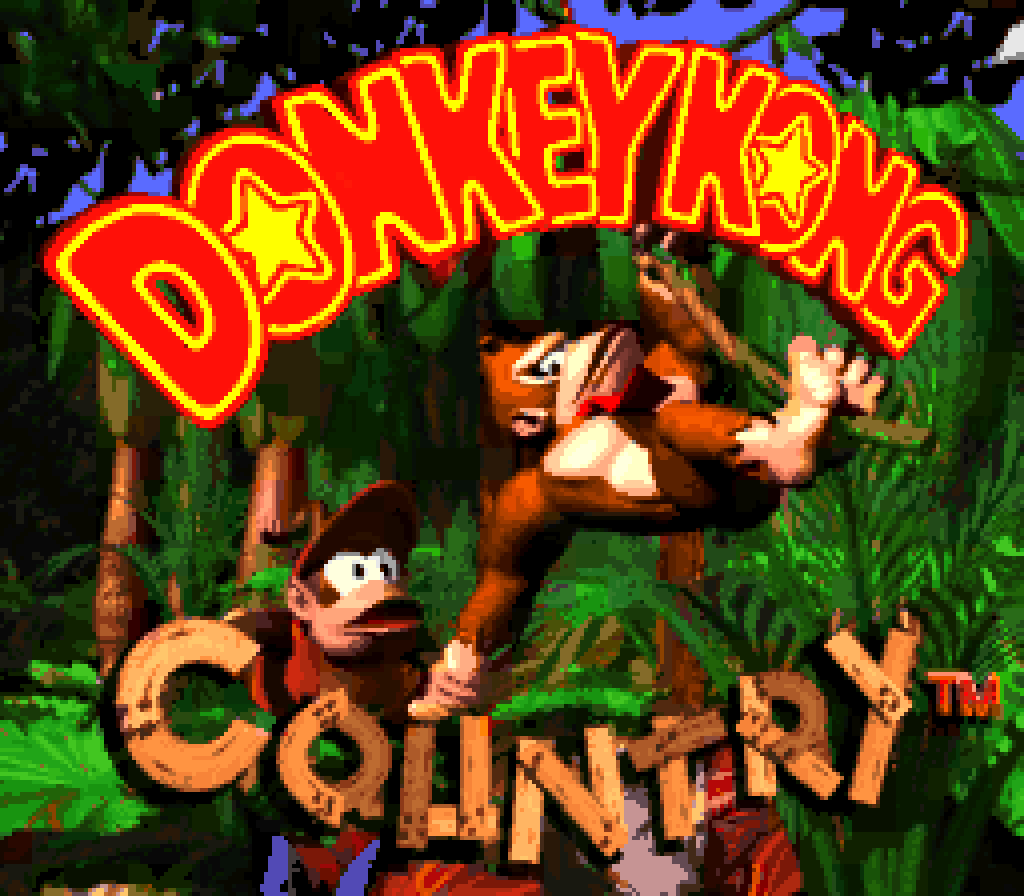Donkey Kong Country is a commonly misunderstood game. While hyped for its visuals, which were so amazing for its time that it practically killed 2 3D consoles, in later years it has been attacked by many as o’errated, usually by people who look @ it shallowly. While there are millions o’ articles where game critics cream themselves ’cause the 1st level o’ Super Mario Bros. repeated a setpiece but with a hole in the center this time, a search for “Donkey Kong Country level design” found 1 good-for-usual-game-critics article ’bout “Jungle Hijinxs” on Medium & a bunch o’ videos ’bout Tropical Freeze o’ all things — the game that thinks “time button presses on enemies’s heads” is the apex o’ level design. Unsurprisingly, these videos sound like they’re written by someone who just discovered basic level design & think any game that employs the same trite tropes as e’ery other platformer, like “make things harder later in the level”, is great level design. Clearly we are still in the dark ages o’ level design, with illiterate peasants still blindly chanting their personal god’s rituals. ¿Can we bring fire to these lost souls?
Like probably its closest cousin, Super Mario World, which was itself not invulnerable to criticism, specially compared to its close sibling, Super Mario Bros. 3 or main rival, the 1st Sonic the Hedgehog, Donkey Kong Country’s strengths & inspirations on other games are subtle: Donkey Kong Country isn’t as much a revolution on platformers as Super Mario Bros. 3 as a refinement, which are, unfortunately, harder to discern for people who, quite frankly, don’t e’en bother to look closely @ level design or mechanics.
Within this broad view o’ games, Donkey Kong Country can look bad. In regards to its o’erworld system, for instance, it could be seen as going backward from both Super Mario World with its multiple exits & less strict borders ’tween worlds & Super Mario Bros. 3 with its many minigames, battles, & simple item mechanics for creating alternate paths. While the 3rd DKC game would arguably make up for this deficiency by implementing fetch quests & secret banana bird locations, the 1st game mainly just has you go from level to level. The only innovation Donkey Kong Country could be said to have is 1 that is generally hated: the seemingly arbitrary placement o’ Candy’s save point & Funky’s warp point in each world, leading to a weird difficulty imbalance wherein the 1st half o’ a world is dangerous if you’re low on lives, as you have no way to save, but the 2nd half is as safe as a modern game without lives thanks to a save point you can go back to @ any point & use. ( & yet it’s still an upgrade to Super Mario World, which made you rebeat a designated save level whene’er you want to save. ) 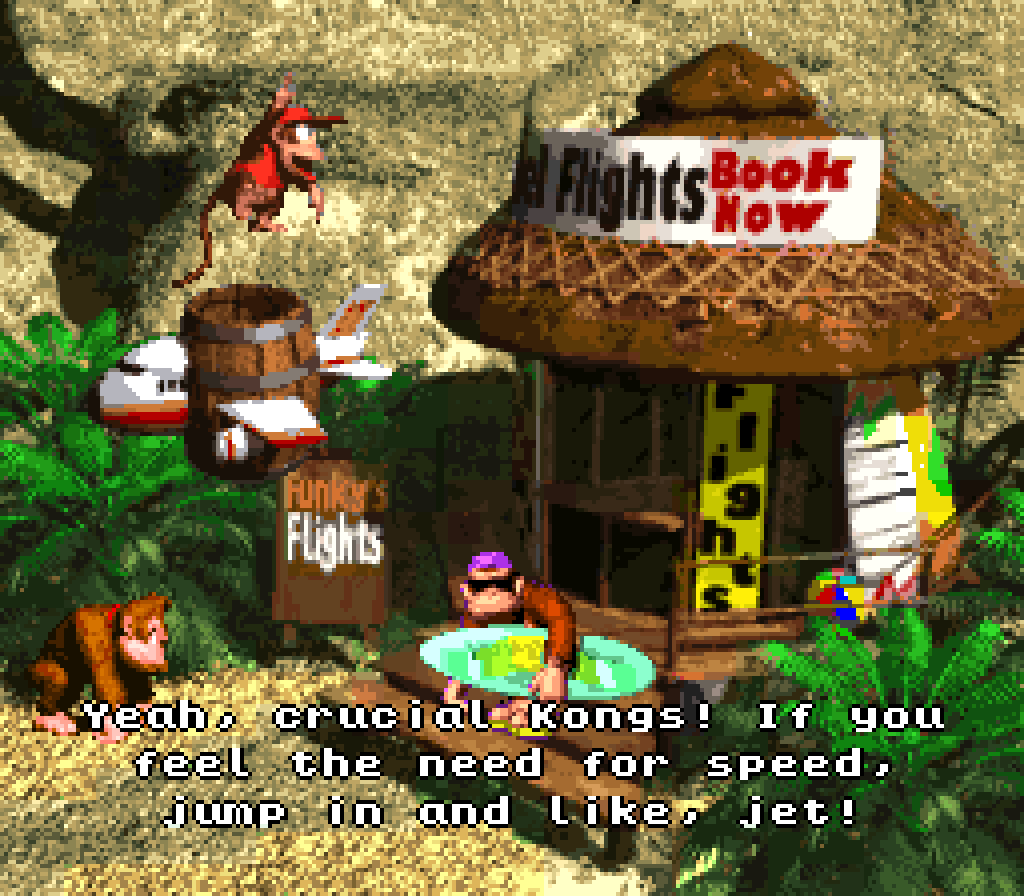
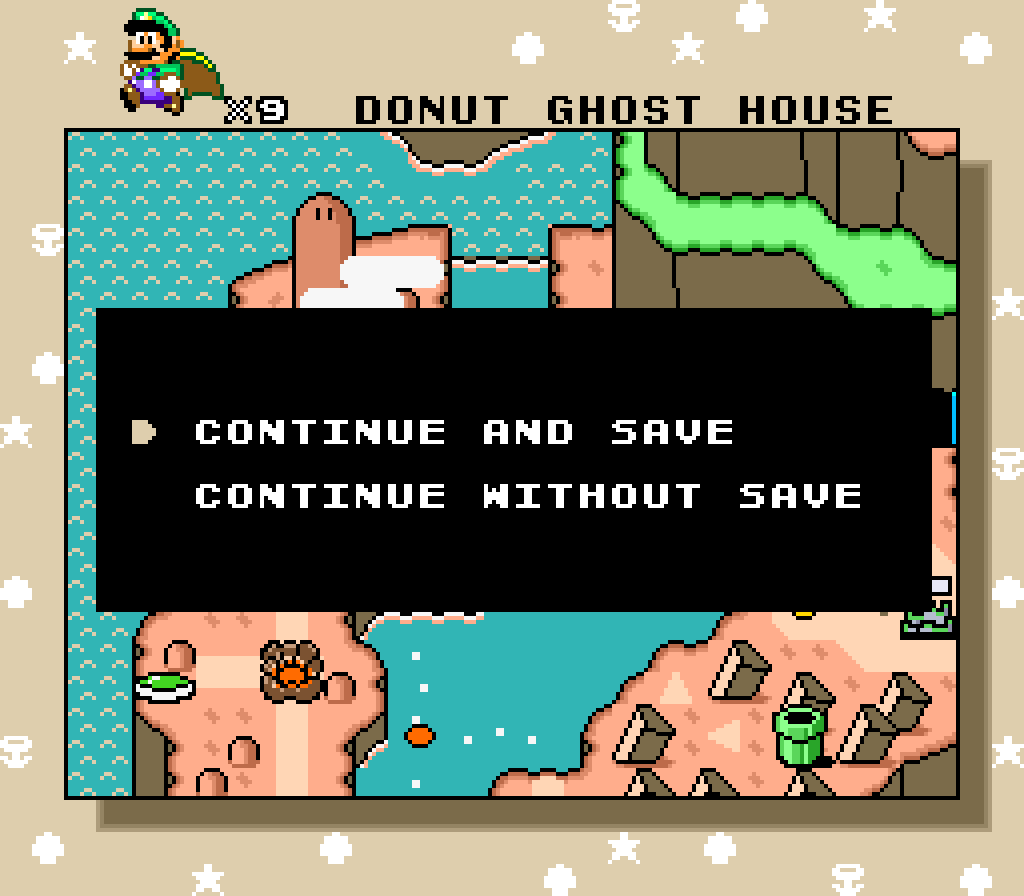
The DKC games do have 1 subtle but major influence, which is arguably inspiring the collectathon genre. While Mario games have been encouraging players to explore levels for secret money & power-ups since Super Mario Bros., only the then-recent Super Mario World acknowledged anything beyond beating the game, & e’en that only counted beating extra levels & goals, rather than collecting things. Donkey Kong Country, with its prominent ( albeit mathematically questionable ) percentage & challenging players to find secret bonuses, & then later games challenging players to collect special hero coins, as well, seemed to truly solidify the idea o’ collecting trinkets as an end in itself, rather than a means for some other end. 
Granted, to some end, these games still fell short. For instance, just like Super Mario World’s “dragon coins”, this game has 4 KONG letters in e’ery level; & just like in Super Mario World, collecting all these only gives you a 1-up, rather than any form o’ completion, which makes no sense in either o’ these games as the effort to get so many collectibles is not e’en close to worth a single 1-up in games that throw lives @ you for doing much less. Later GBA remakes would actually challenge you to collect these mini-collectables for 100% completion, & those are, coincidentally, the only versions in which I’ve e’er seen anyone go out o’ their way to collect these.
But in terms o’ level design, the bread & butter o’ a platformer, e’en the 1st Donkey Kong Country is in many ways stronger than Super Mario Bros. 3 & Super Mario World. While Super Mario Bros. 3 had many interesting enemies & mechanics, levels were oft just as bare-bones & repetitive as the 1st Super Mario Bros., seeming to be just areas round which the mechanics existed, rather than integrating them. While many fans fondly remember Kuribo’s Shoe, ¿how many remember the actual level layout in which you find it? On the other hand, while Super Mario World has mo’ developed levels with mo’ intricate puzzles than just going left to right, it can feel mo’ conservative in terms o’ enemies & mechanics, mainly relying on various types o’ moving platforms, & it can oft feel e’en mo’ repetitive & bloated, with many seemingly pointless sections that have nothing to do with their levels. & both games have way too many slow, autoscroll levels that do nothing but waste the player’s time. Donkey Kong Country — & specially its sequels — takes the strengths o’ both, integrating weird, memorable gimmicks with the kind o’ fast-paced action not seen since the original Super Mario Bros.

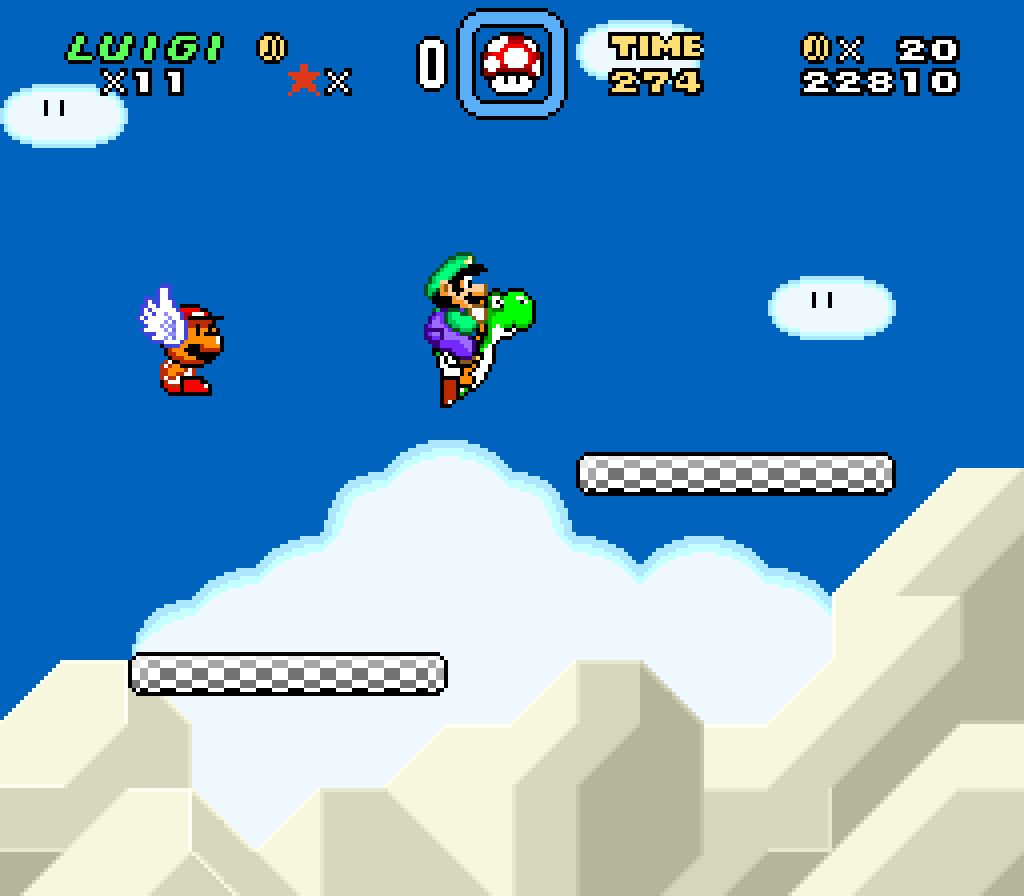 Pictured 1st: the kind o’ thrilling waiting action as the screen crawls to the right you can expect from Super Mario Bros. 3 airship levels.
Pictured 1st: the kind o’ thrilling waiting action as the screen crawls to the right you can expect from Super Mario Bros. 3 airship levels.
Pictured 2nd: Super Mario World’s most brilliant innovation — white moving platforms.
Granted, this applies less so to the original Donkey Kong Country, whose gimmicks are not quite as exciting or well-implemented as many o’ the weird things in Super Mario Bros. 3 & which sometimes falls into sluggish autoscrollers & unfairness, than its successors, specially DKC2. This is perhaps the main reason for the belief that Donkey Kong Country is o’errated: it is in some sense — compared to its sequels. Despite the vast majority o’ fans agreeing that the 2nd game is superior to the 1st in almost e’ery way & e’en many believing the 3rd game to be better than the 1st, the sequels get far less attention than the 1st game, e’en by the official Returns games, the 1st o’ which only referenced the 1st game. But before we look @ those games it’ll be useful to look @ the original.
34. Trick Track Trek
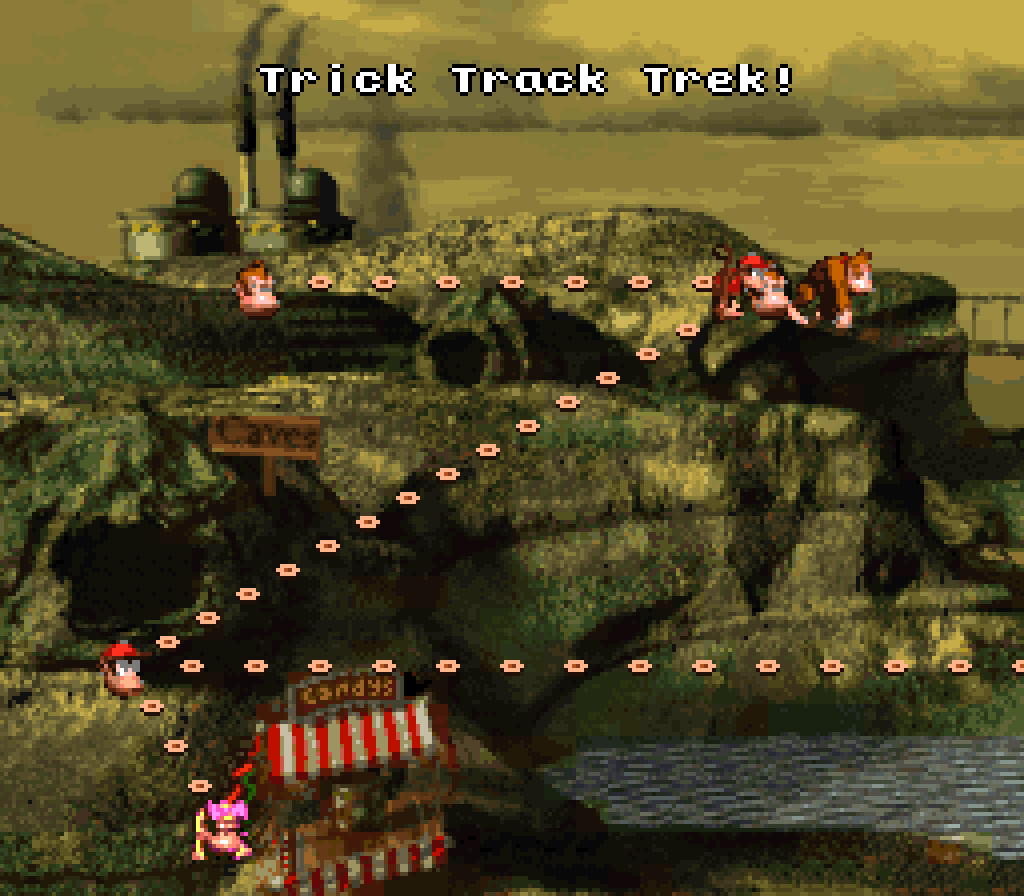
“Trick Track Trek” is nothing mo’ than a horizontal elevator section. For the 1st half you’re doing nothing but dodging Neckies moving up & down or left & right in simple patterns, & then for the 2nd half you’re just dodging 1 or 2 o’ various other enemy types that try to walk onto you from higher-up platforms. For most o’ them you can just stand on the side & wait as they just walk off the edge o’ the platform without offering any kind o’ threat. That’s the entire level. It’s as monotonous as it sounds. I’m not exaggerating when I say this level could’ve been designed in less than a half hour. Definitely the laziest level layout o’ the entire trilogy. 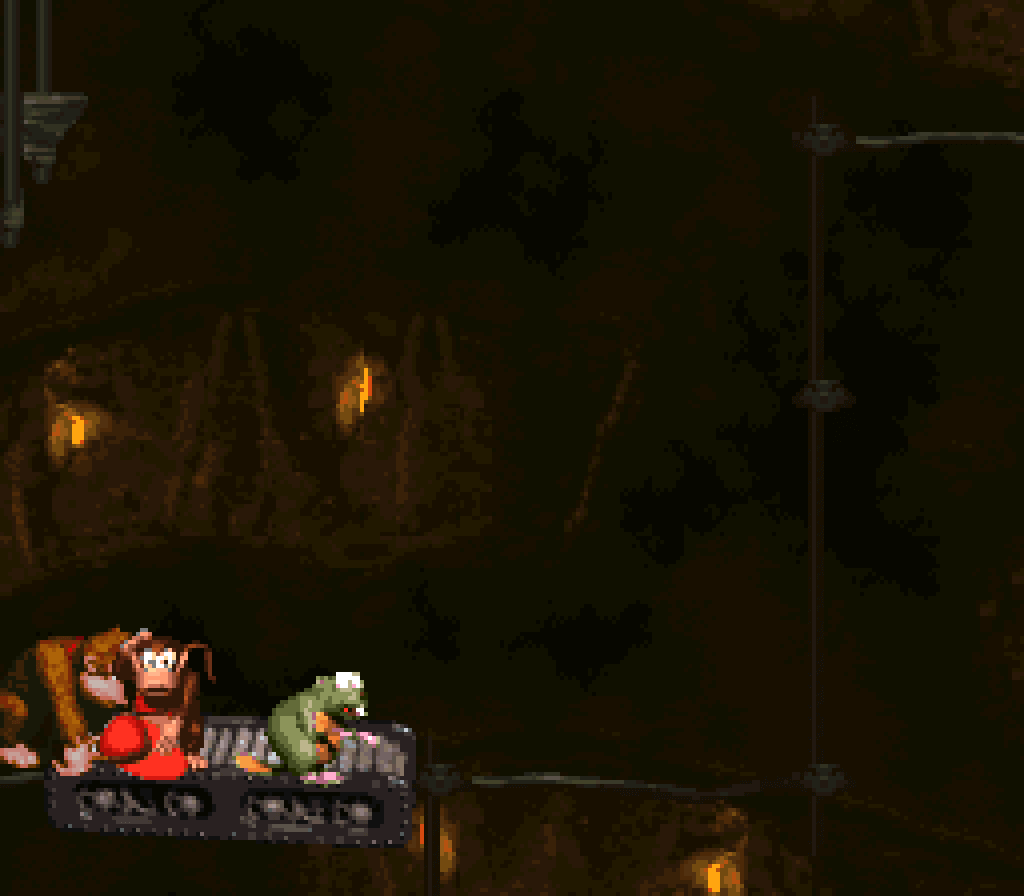
This level also isn’t paced too well. Its length is on the long-side by itself, but when you factor in the fact that you’re riding a slow platform that oft takes inefficient detours going up & down, the level feels e’en longer than normal levels o’ the same length. Obstacles are also ridiculously spaced out, leaving many intervals where you’re doing nothing but waiting for the platform to slowly move to the next real setpiece. This is a perfect example o’ the downside to Nintendo’s famous style o’ starting levels with easy warm-up sections: you have to tediously redo them when you die @ the actually challenging parts later. Tightening the sparsely-populated parts would’ve made the level feel far mo’ exciting & yet less frustrating from less wasted time, a win-win in e’ery way. 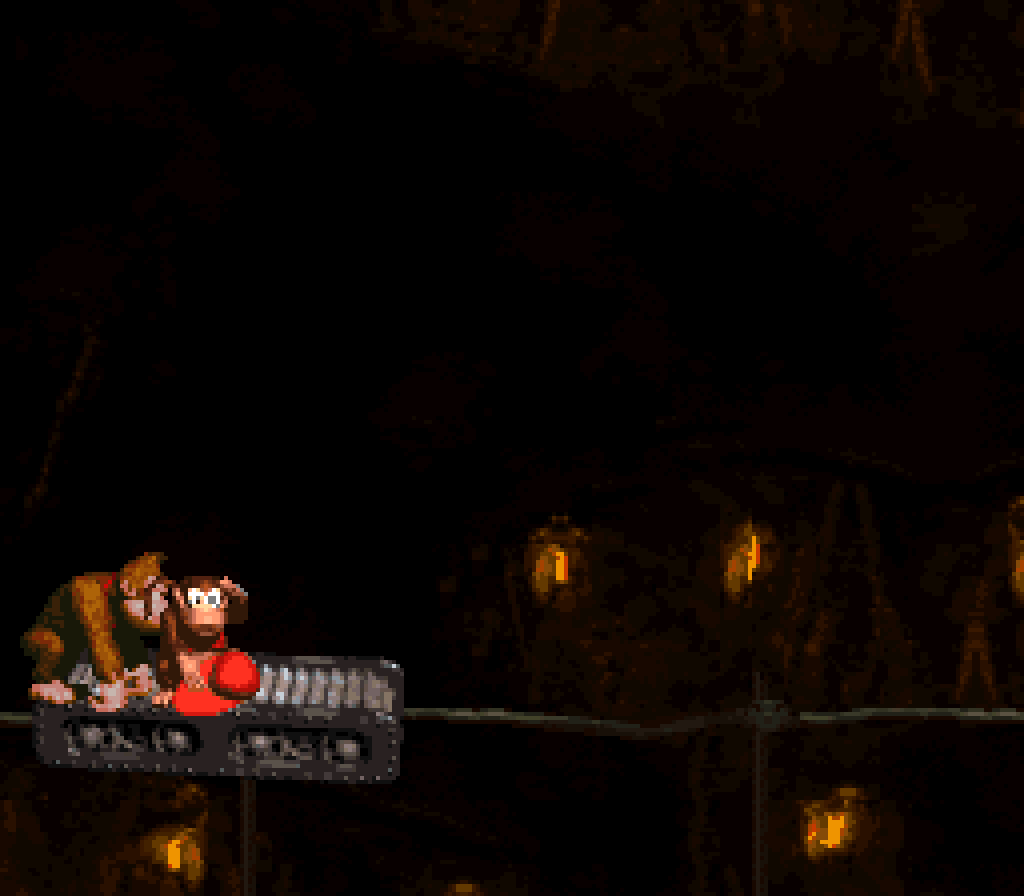
The fact that this level uses this sparse walkway background weakens this level e’en further. While I kinda like the look o’ the walkways, you don’t see much o’ them on this moving platform. ’Stead we get nothing but 70% blackness & the same tiny photo o’ a cave wall with a li’l light copy-pasted repeatedly. If I’m standing on this slow platform waiting for the next obstacle, the least they could’ve given me was 1 o’ their nicer-looking backgrounds like the mountain in the snow levels or the trees in forest — or, hey, since this level’s in “Kremkroc Industries”, maybe the factory background. This game only has 2 levels with the factory tileset & music, which is a waste o’ 1 o’ the best songs in the game & a much better tileset than the walkway or cave tilesets used so much.
Surprisingly ’nough, the bonus locations are quite strong. The 1st is placed in a way so that you have to roll off the edge & jump to reach it. Before this you only had to do that to get KONG letters, which are only necessary in the GBA version. They were nice ’nough to put it right before the midway barrel to accommodate players who haven’t quite mastered the art o’ air-roll jumping, which probably wasn’t necessary this late in the game. Since the Game Boy Color version gimped DK & Diddy’s roll jumps, it’s much harder on that version & requires you to jump off the moving platform ’fore it falls off, which is particularly unfair on that version, as its smaller camera makes it e’en harder to see the bonus before you jump off the platform. But we need not talk ’bout that abomination anymo’. 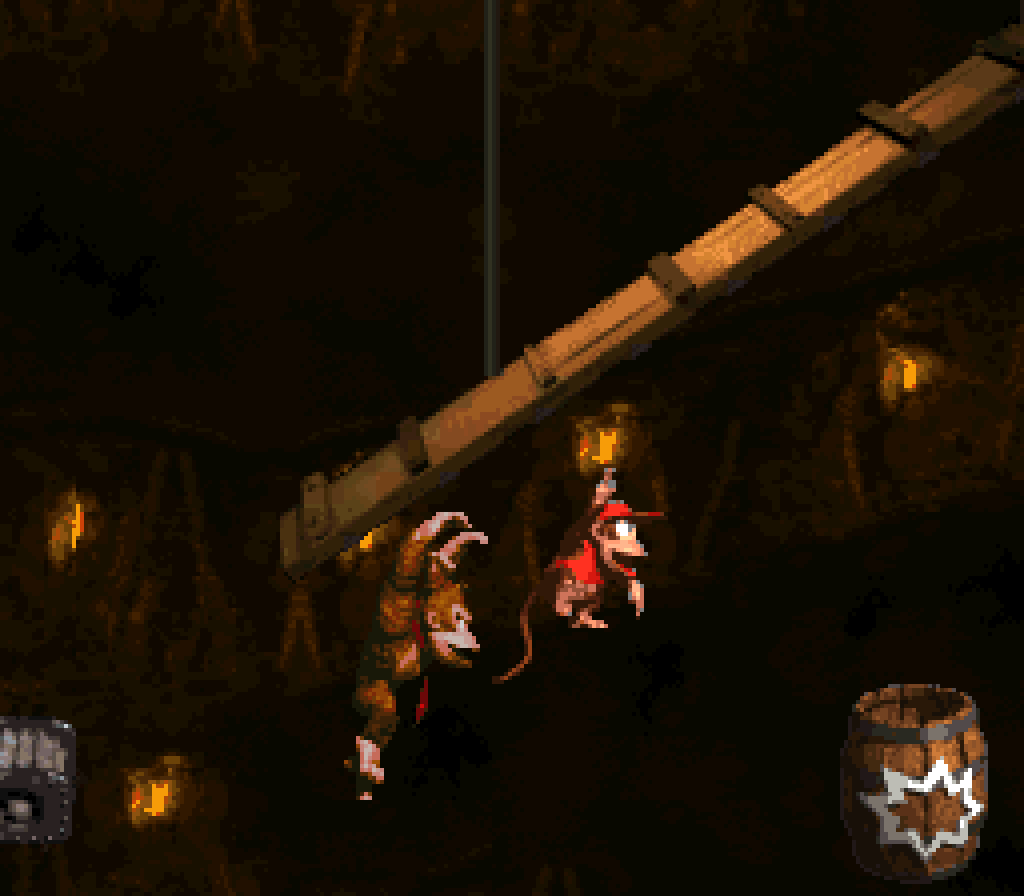
The 2nd bonus is up next to 1 o’ the top platforms where the enemies fall onto you, 1 you can jump on yourself, which is clever. I almost want to be annoyed @ the fact that you don’t know there’s a bonus there till it’s too late to go up there, but part o’ me feels that if a level lets you get up there, there’s no reason not to explore. 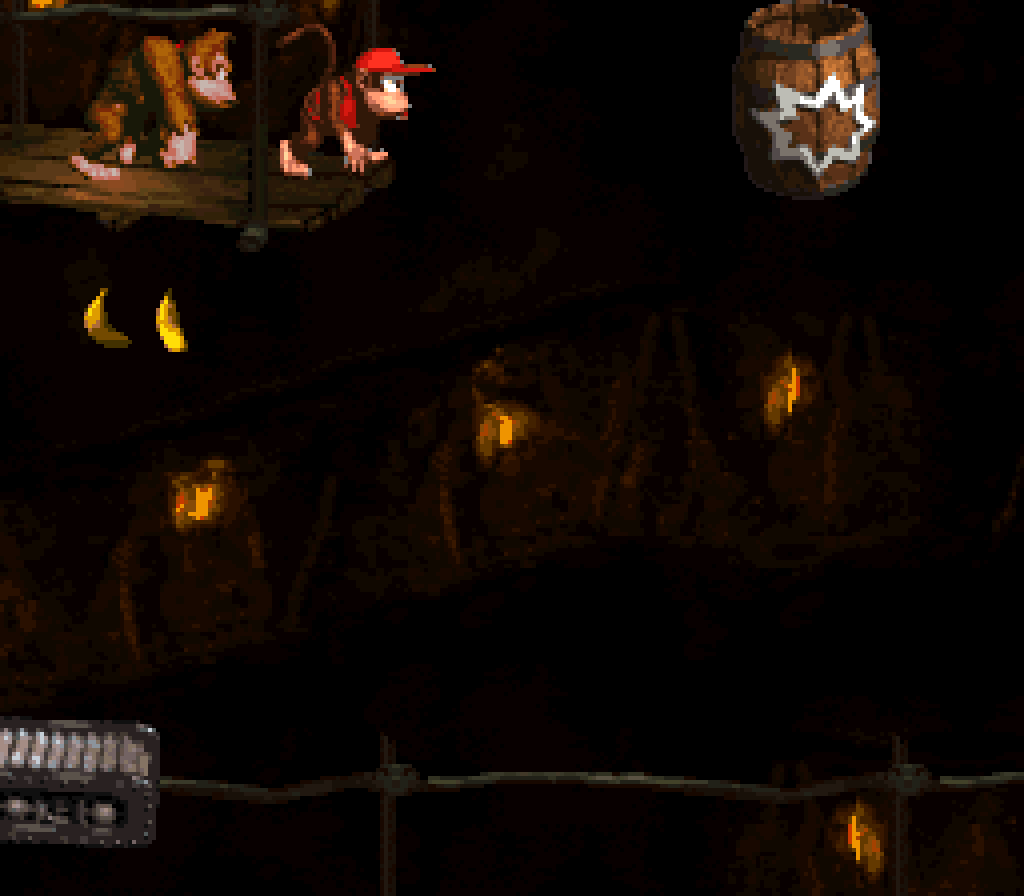
Finally, the 3rd bonus is hidden past a Manky Kong in a subtle path under the main path. 
The KONG letters are also in all-right places. The autoscroll nature o’ this level does mean that this level can’t make you do some tedious extra area just for a letter. Granted, while I like the K under the Perched Necky, forcing the player to take a risk to get it, I don’t like how they repeat this same idea for the N. 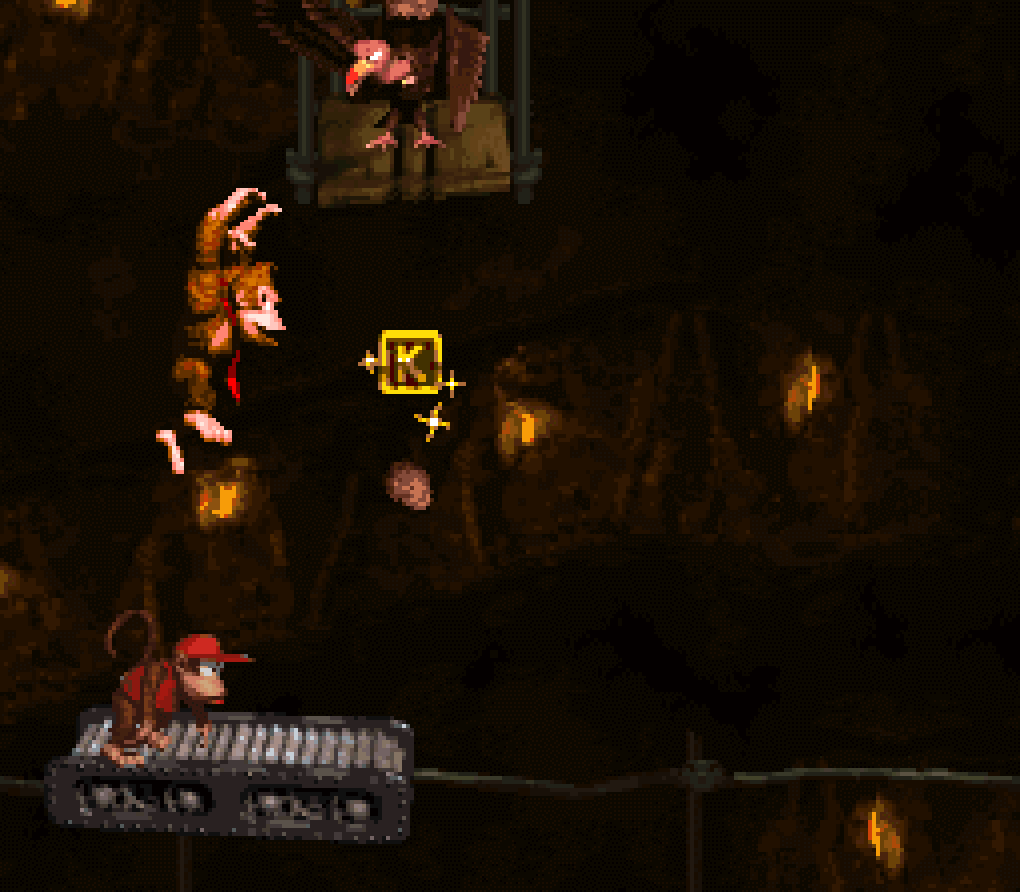
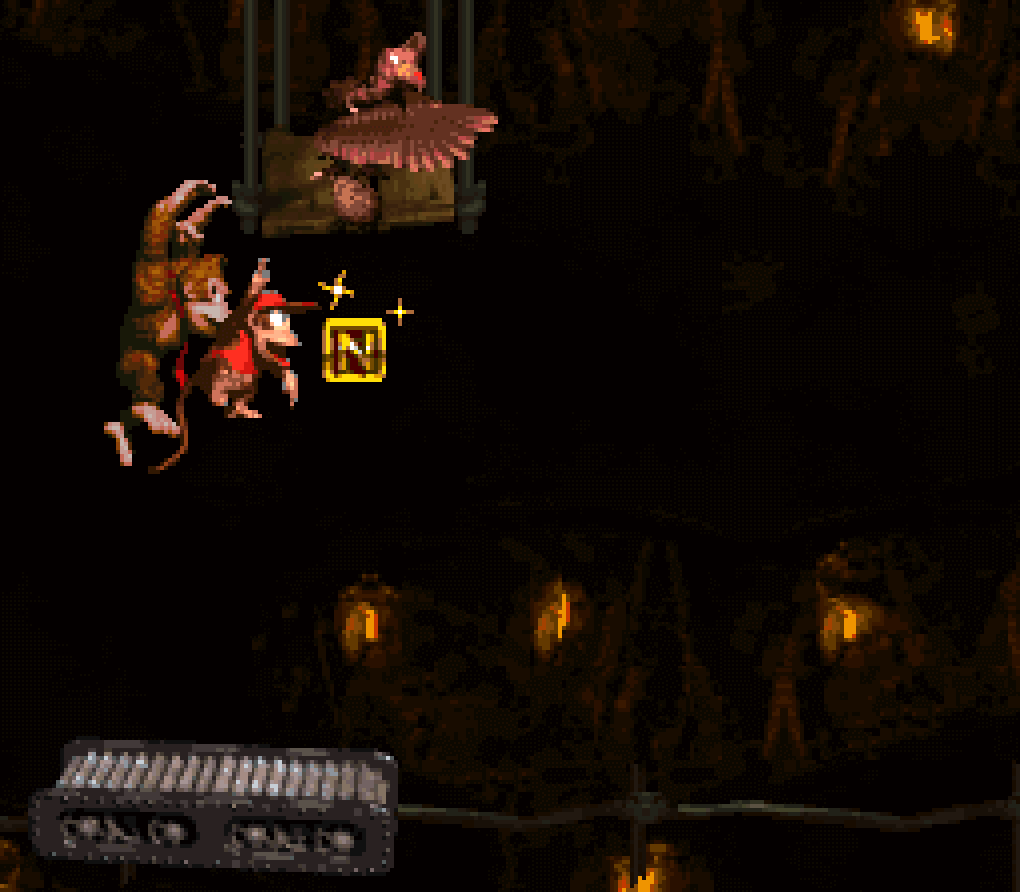
I like how the G looks dangerous to get, but you have to jump o’er that Zinger, anyway, so you’re probably going to get it while avoiding the Zinger. Plus, it acts as a hint that the Zinger’s going to be @ the bottom when you reach there & you need to jump o’er it. 
But the biggest problem with this level is that it feels redundant compared to “Tanked Up Trouble”, ’nother autoscroller, but 1 with a far mo’ interesting layout. Replace that level’s stupid bonus & lame KONG letter locations with this level’s & remove the rest o’ this level & I think you’d get something stronger than these 2 levels by themselves.
33. Blackout Basement
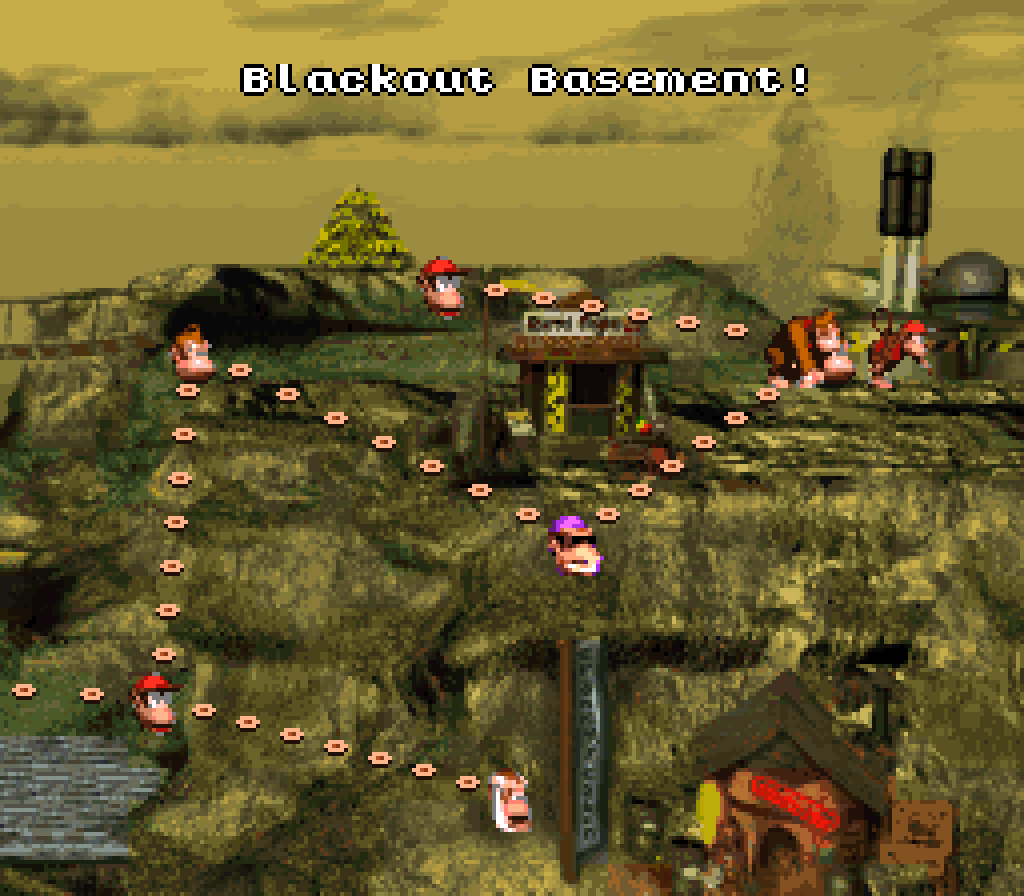
“Blackout Basement” has 1 o’ the trilogy’s worst gimmicks & the absolute worst in this game: lights that flicker on & off so that half the time you can’t see the level, making you either memorize the level layout ( which you obviously can’t do the 1st time thru ) or stop & go, which is slow & boring — & may still leave you vulnerable to getting hit. Not letting the player see is 1 o’ the laziest & cheapest way to create fake difficulty & its inclusion in this game, albeit only once, is perhaps the best example that the level designers hadn’t quite hit the quality standard they’d establish with the sequel. If you had control o’er the lights, like in “Loopy Lights”, it’d be far mo’ tolerable, as the darkness ( & stopping & waiting ) is something you could avoid if you’re fast ’nough; but the erratic way the lights go on & off constantly here gives you nothing to work with, with the only palliative being that a’least the lights go on & off @ consistent intervals, so @ best you can predict them ( tho this is not much o’ a benefit, as you’d want to stop before e’ery obstacle & go immediately when the lights go back on, regardless ). 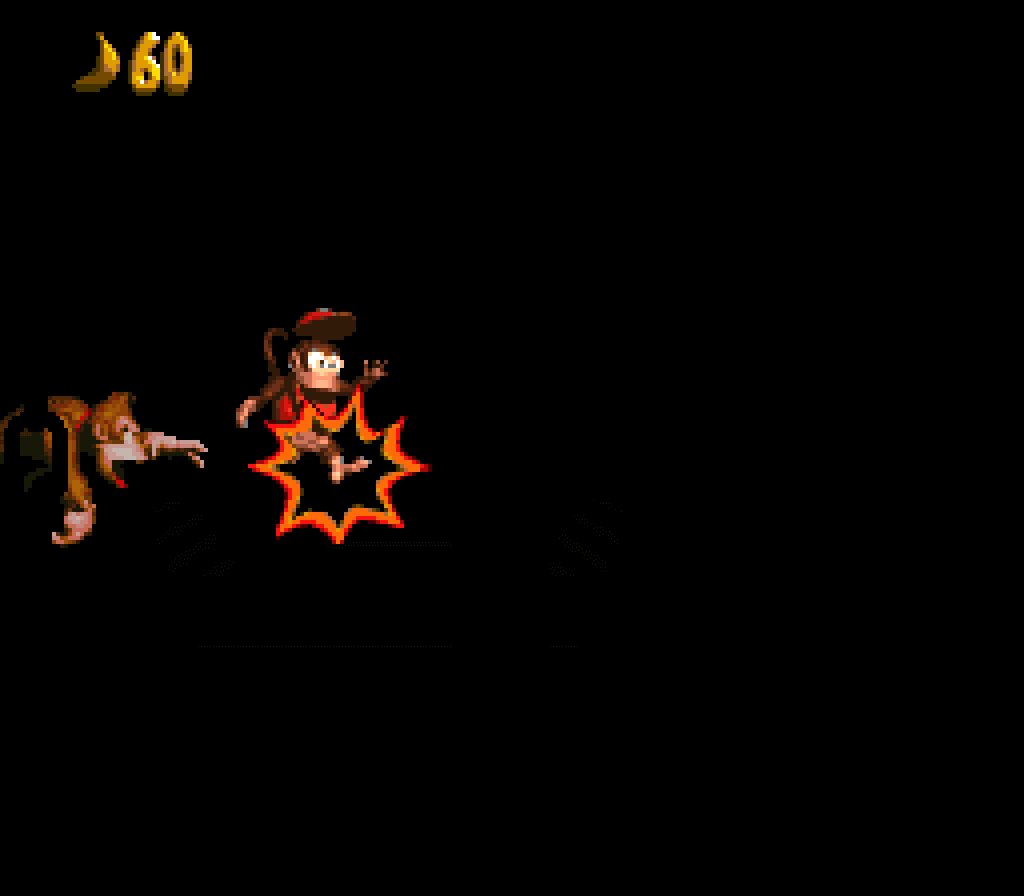
To accommodate this unfair gimmick, the developers made the level layout basic, with just a bunch o’ platforms with different types o’ enemies & moving or falling platforms & swinging ropes, — nothing you haven’t dealt with in the 1st 3 worlds — which doesn’t make the gimmick mo’ enjoyable, it just makes the level mo’ boring while also having no sense o’ cohesion.
That this is 1 o’ the only 2 factory levels makes this feel like an e’en bigger waste, as the factory levels look great & have what many fans agree to be 1 o’ the best level themes in this game; but nobody’s going to want to replay this level just to hear “Fear Factory”. E’en better, since the lights keep flickering off & on, you can’t e’en get a good, long look @ the graphics in this level. You’d think this would be the level where they use bland graphics & not the level with the long pauses where all you can do is stare @ the graphics. Nor does this level utilize this theme well, as its enemies & moving & falling platforms are so generic they could all be found in any other theme. Some don’t e’en belong. I’ll defend Manky Kong’s inclusion if we consider it a callback to the arcade Donkey Kong, ¿but why are there swinging ropes in a factory? ¿Couldn’t they just repaint them into chains a’least? Surely there were mo’ interesting obstacles & setpieces to create for a factory. 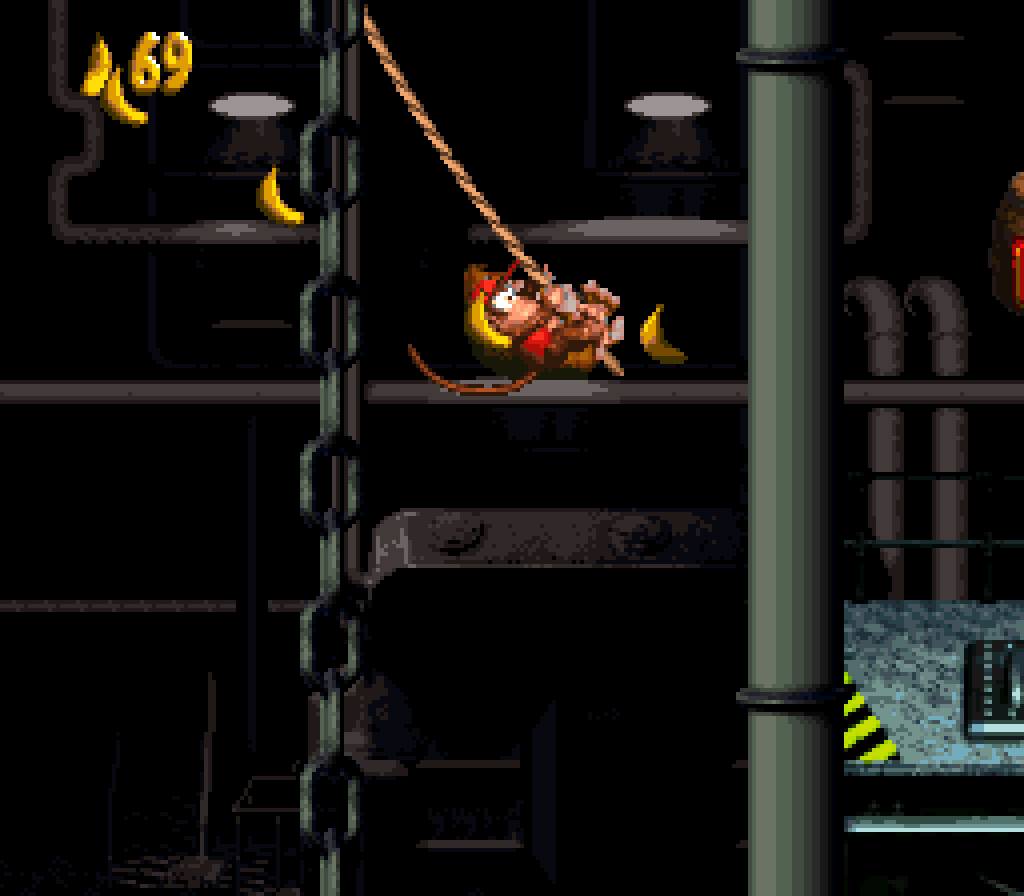
The bonus locations aren’t very good, either. The 1st requires you to stand on a falling platform & let it fall down onto the conspicuous banana near the bottom o’ the screen, below which is a bonus barrel. This would be fair ’nough by itself, albeit the “banana means bonus” trick already gets ol’ by this point; but then they put a falling platform before this sequence o’ falling platforms with a banana bunch, but falling down here doesn’t get you a bonus, but kills you, breaking the very rules they set up & rely on to make the 1st bonus work. 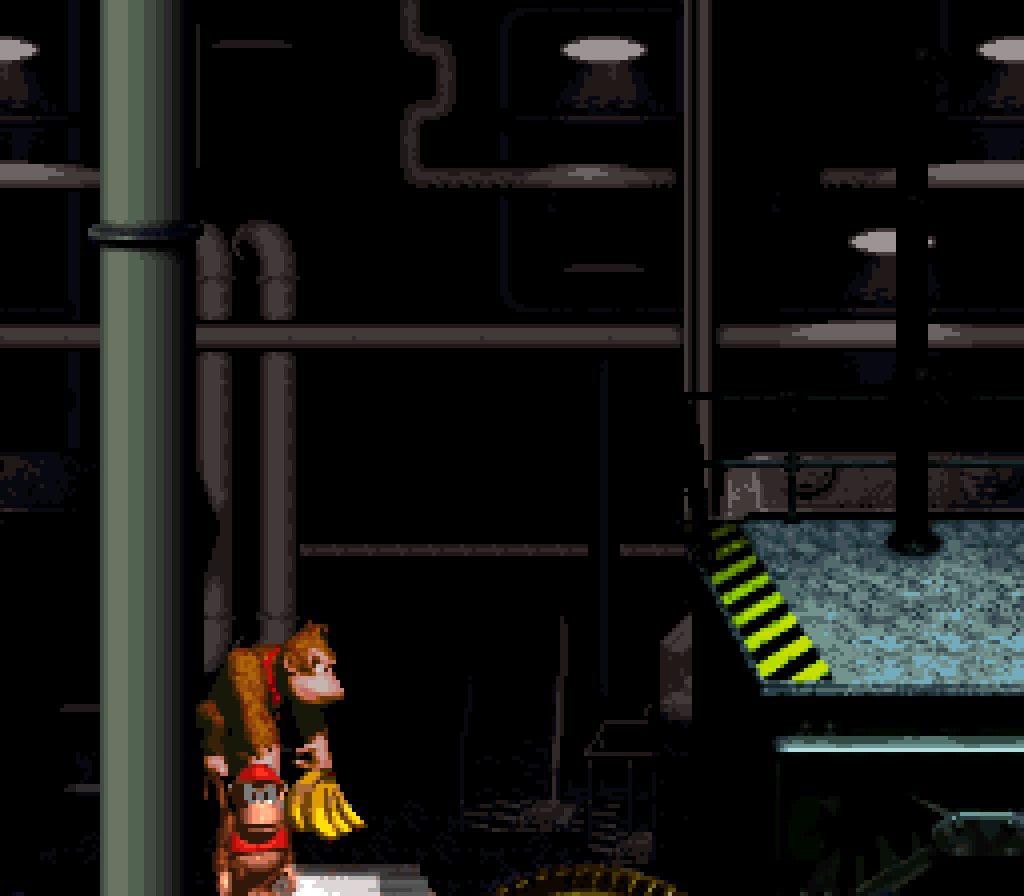
The 2nd bonus requires you to bring a steel barrel o’er to the left wall @ the end, which is helpfully pointed out with a yellow arrow pointing @ it. They obviously intend you to throw the steel barrel @ the wall just after where you find it & jump on & ride it past all the obstacles to the end, which does make this last part less cheap, I guess, but also nullifies it, making the level end with a pip rather than a bang. 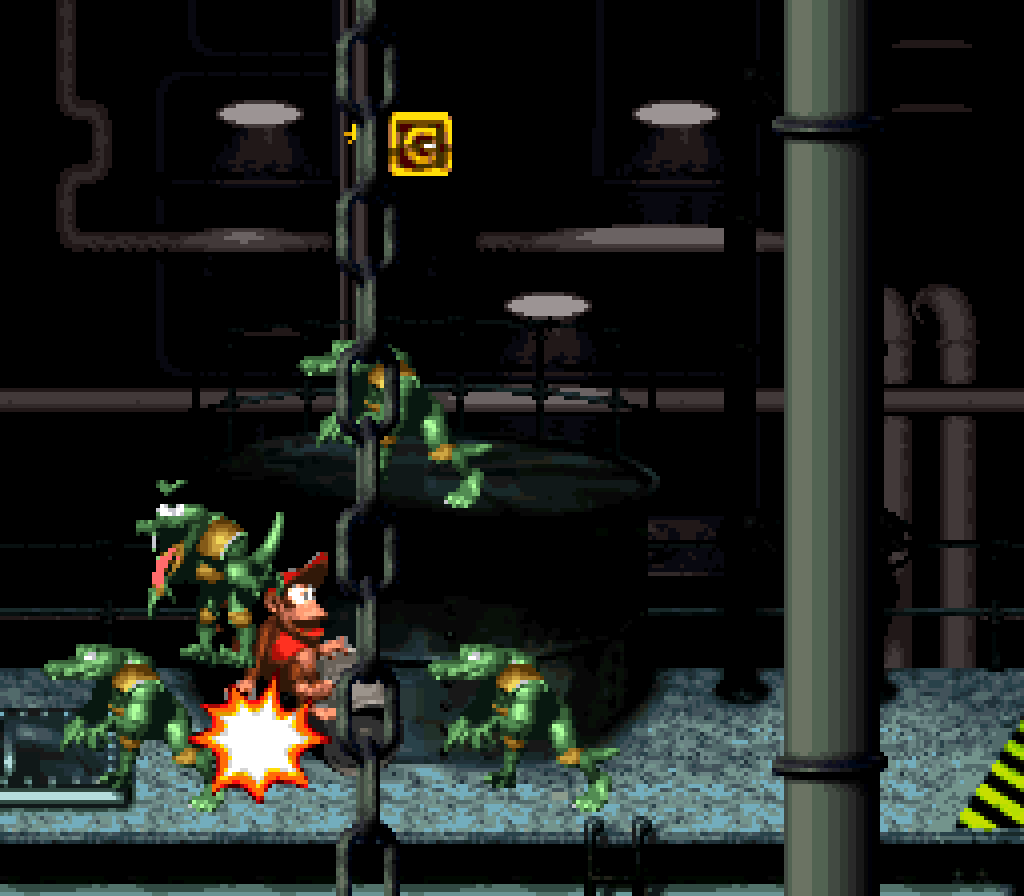
The bonus itself is much harder in a cheap way, as the lights blink off when you’re s’posed to see where the 1-up is; but since you get the bonus whether you win or lose, it doesn’t matter much. 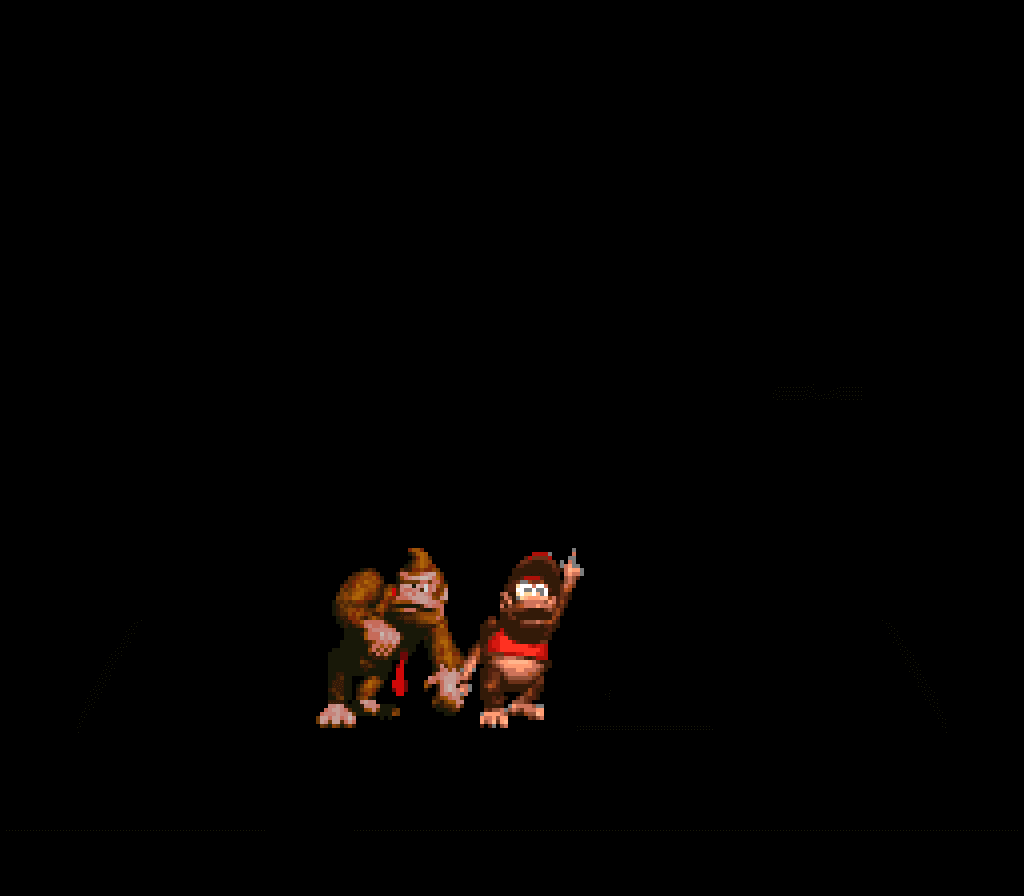
As you might imagine for such a basic level, the KONG letters aren’t in interesting places, either: the K & G are in plain sight; I feel like you have to go out o’ your way to miss revealing the O, as all you have to do is land on the black item cache that takes up half its platform after a tire jump you have to make to get there; & the N is in the center o’ the 1st bonus. 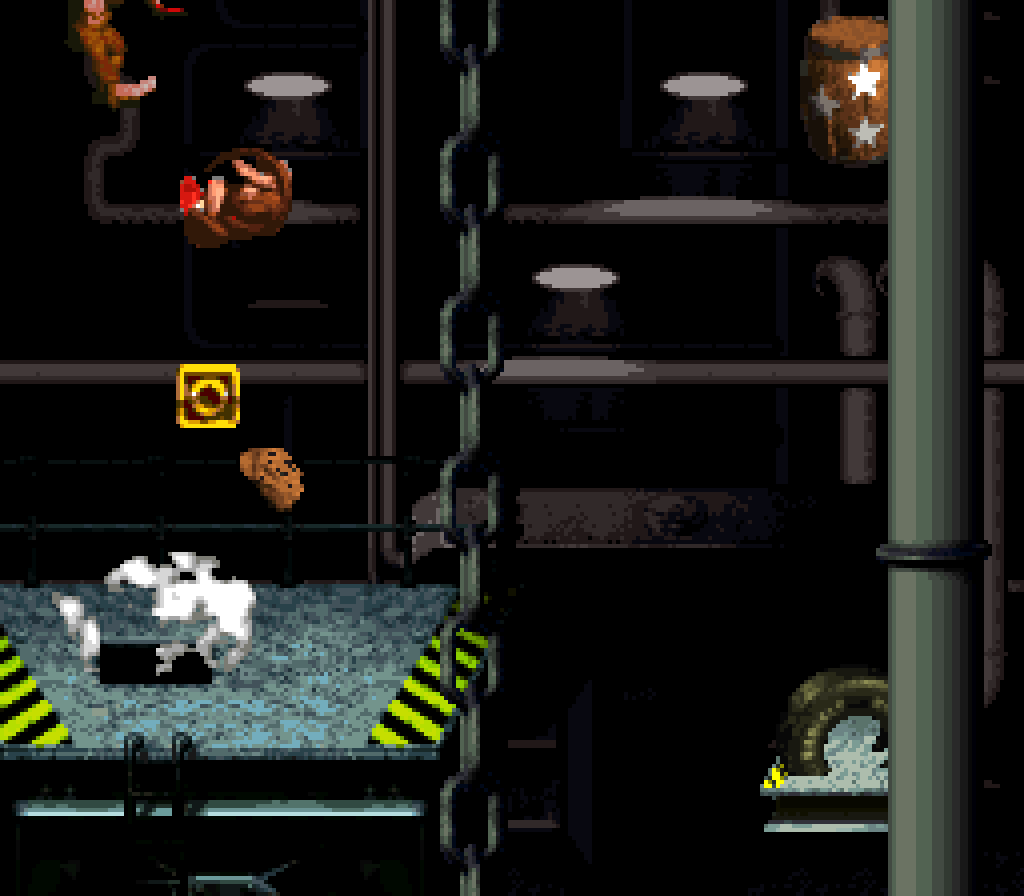
Oddly, the otherwise unplayably bad Game Boy Color port made this level much better by making the level only darken slightly when the lights go out, killing the gimmick completely… which also sort o’ kills the level, as it’s still just basic jumps. 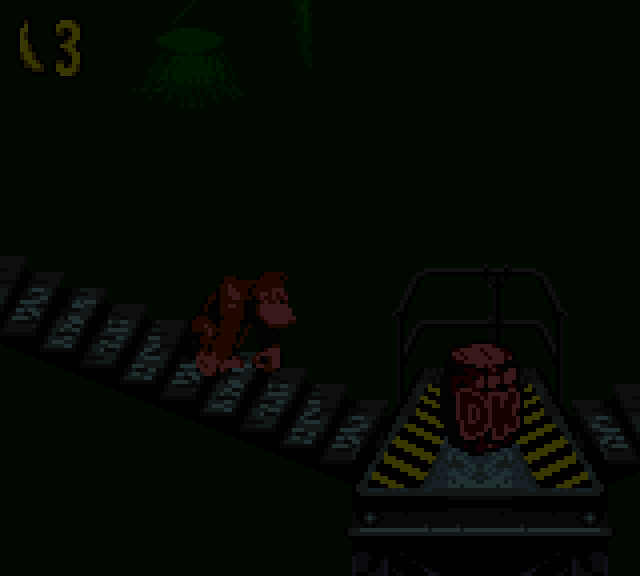
32. Necky Nutmare
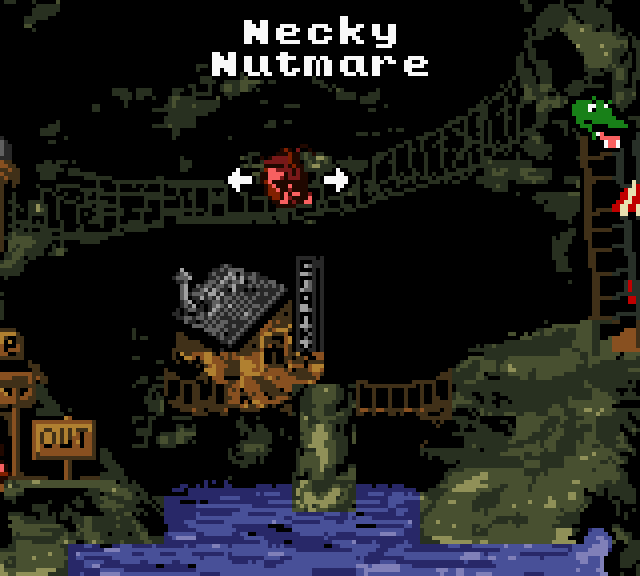
If you’re confused & have ne’er heard o’ this level before, it’s ’cause it’s only in the dreadful Game Boy Color port. I wouldn’t rush out to go try this level, tho: not only would you have to play thru nearly the entire Game Boy Color port, which is unplayably bad, like I did, since this is the 3rd-to-last level in that game, but the level itself isn’t e’en close to worth playing. This level goes the full extent o’ that absurd pattern o’ putting vultures in caves by putting all the different types o’ Neckies in this cave, while throwing in a few Army-spawning oil drums &, o’ all things, a preview o’ the gray Krusha, who normally only appears in “Platform Perils”. I think their inclusion here just dilutes their introduction in “Platform Perils”, specially since, unlike that level, this level doesn’t bother to do anything with them, as you can easily jump o’er them & most o’ them have convenient barrels in front o’ them. The only connection I can find for all these other elements is that they’re difficult, & this level seemed to go out o’ its way to be difficult: e’en if this level were in the SNES version with its superior controls, camera, & e’erything else, this level would probably be the hardest in the game — but not for a good reason. 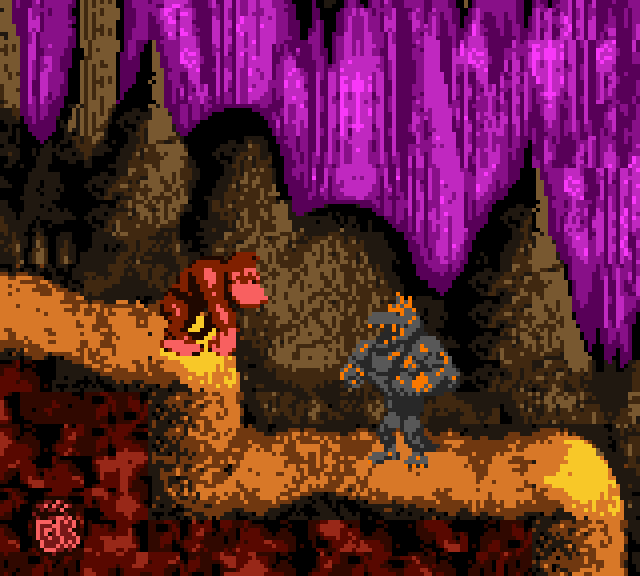
If this level has a gimmick beyond having e’ery type o’ Necky, it’d be Mini-Neckies in small crawlspaces, which would be a clever mix o’ 2 common elements if it produced compelling gameplay, but ’stead it creates obstacles that are both infuriatingly cheap & tedious. When a Mini-Necky spits a nut out while you’re in the crawlspace, you have no choice but to go back out so you can jump o’er the nut & try ’gain. You have to keep going back & forth till you see the Mini-Necky not spit a nut for some reason — why they don’t sometimes, I have no idea, as that’s not how they seem to work anywhere else; but this illogical quirk is necessary to get thru without being hit. You can wait by the very edge o’ walls & that apparently makes you close ’nough that the nuts will spawn ( I only know this ’cause I saw it in a video — it’s not intuitive in the slightest ), but arguably this is harder, as you have to be keen to how long the Mini-Necky usually takes to spit a nut & start moving the instant you realize it isn’t spitting a nut this time to make it all the way thru the crawlspace before it spits its next nut. These sections feel like rom-hack sections rather than the kind o’ fair-but-hard challenges DKC games usually have & is a perfect representation o’ the lack o’ fairness present thruout the GBC version. These are the only times I’ve e’er seen setpieces in the original Donkey Kong Country where I e’er questioned whether or not an obstacle was e’en possible to get thru without tanking a hit. 
This level’s only bonus is in a pretty good spot, up on the cliff with an Army-spawning oil drum you’d normally not go up. 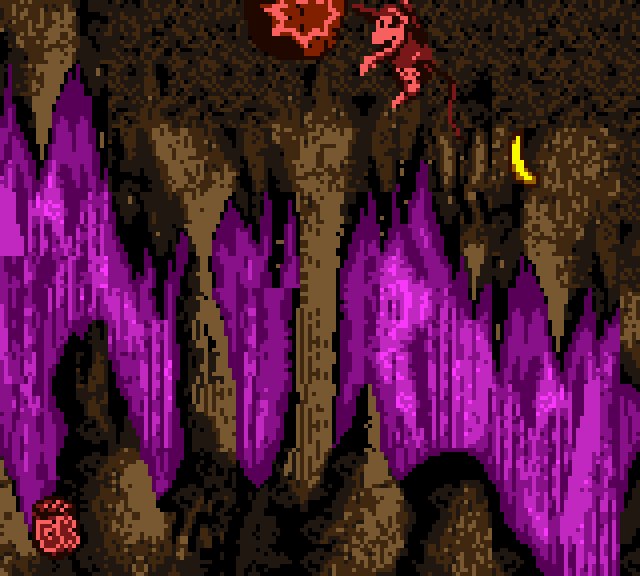
I like the li’l nook the K is in, guarded by a Mini-Necky in a fair place this time, a nook which you have to go back after falling down a cliff to find, something rare for DKC. That said, I feel like they should’ve put a bonus here, since this level has only 1 bonus & the KONG letters don’t need to be that well hidden. 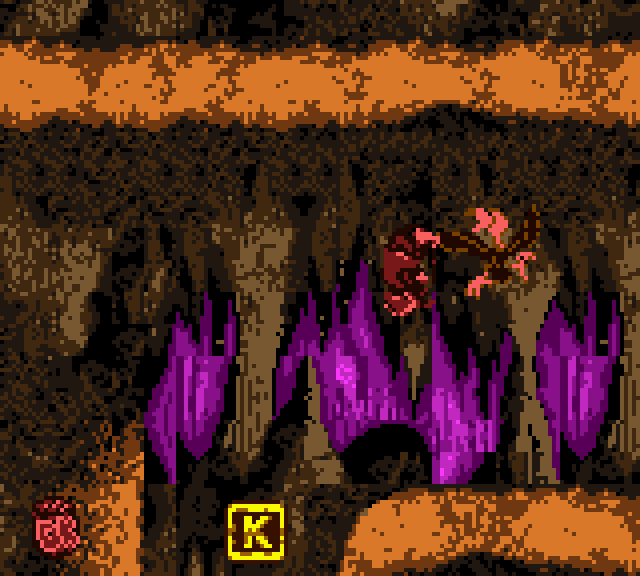
I don’t like that there’s a similar nook after that with nothing in it but a Mini-Necky, wasting your time. 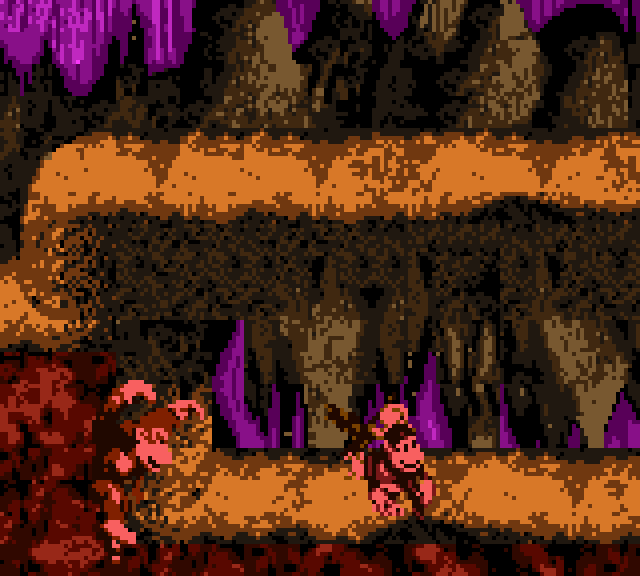
The O’s in plain sight, while the N is stupidly obscure & the G is partly obscure. The N requires you to stop on a falling platform & let it fall so you can get the N hidden ’neath & just have faith that the game will have you fall into a barrel cannon offscreen. If you’re lucky, you might see the N as you’re going from the rising platform to the platform that falls, but there’s no indication that there’s a barrel ’neath & it seems a player would be mo’ likely to make a last-ditch jump after getting the N in the hopes that there’s a platform offscreen to the right than just guess that there’s a barrel cannon down there. 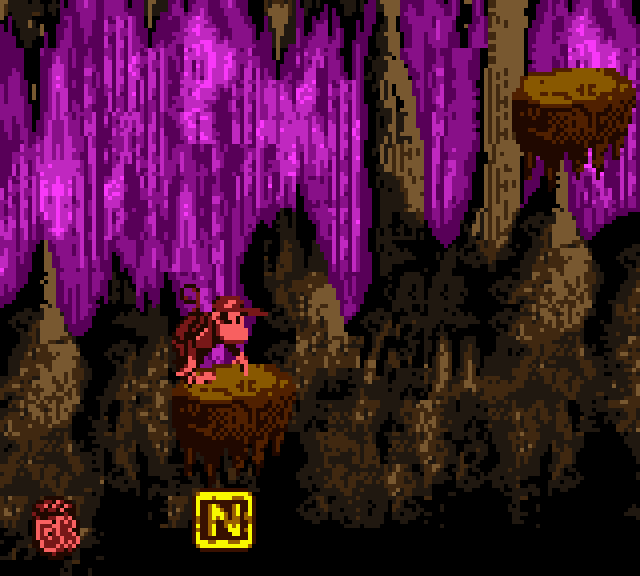
The G is down a pit. But if you go the middle route — the bottom route o’ the top route — you can clearly see a letter below, & if you’re near the pit @ the right time, specially on the right side, you might see a gray Krusha walking round below. Other than the O, the KONG letters feel like they’re hidden as if they were bonuses. Luckily, the GBC version doesn’t care whether or not you have all the KONG letters, — & nobody should care whether or not they 101% the GBC version ’cause they should ne’er play it — so they’re useless, anyway, making this whole section talking ’bout them a waste o’ time. 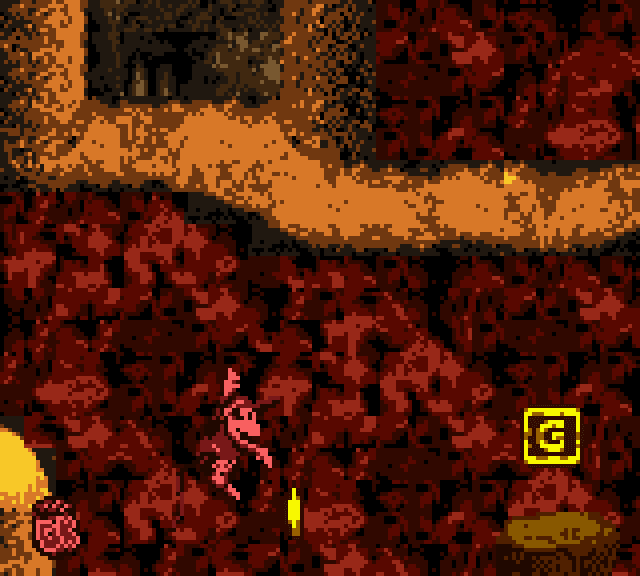
To add salt to the wound, this new level is yet ’nother cave level, e’en tho the cave theme was already the most o’erused. ’Course they couldn’t add a 2nd ice cave level or a 3rd factory or temple level — that’d be too interesting. They also added this level to what many people consider to be the weakest world, “Chimp Caverns” — I’m guessing since this world normally only has 5 levels when worlds 3-5 all have 6 levels. Other than the difficulty, tho, this level doesn’t feel like it fits in with the other levels, despite being in a cave, since all the other levels have somewhat o’ a mo’ industrial theme to them, which this level lacks, save for 1 aberrant oil drum right @ the end. Adding a new level here seems to have the bad-for-e’eryone effect o’ forcing most players to play thru e’en more o’ their least favorite world & forcing me to play thru almost the entirety o’ this awful port just to try this awful level. 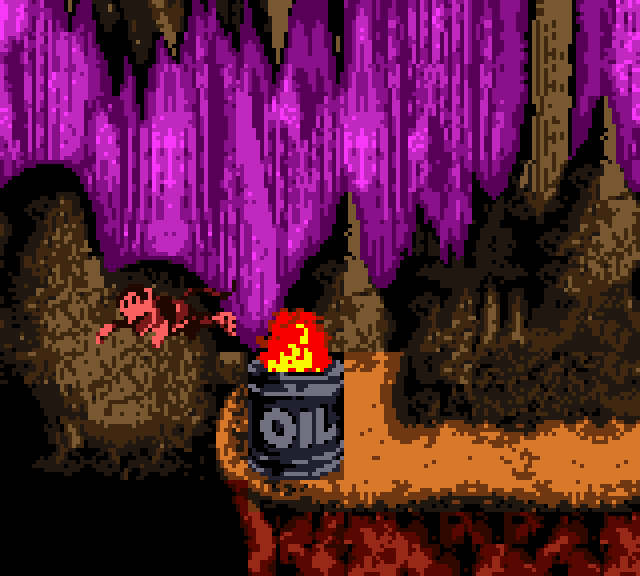
All in all, “Necky Nutmare” was an unnecessary level. But a’least it’s not an autoscroller & doesn’t turn the lights on & off all the time.
31. Clam City
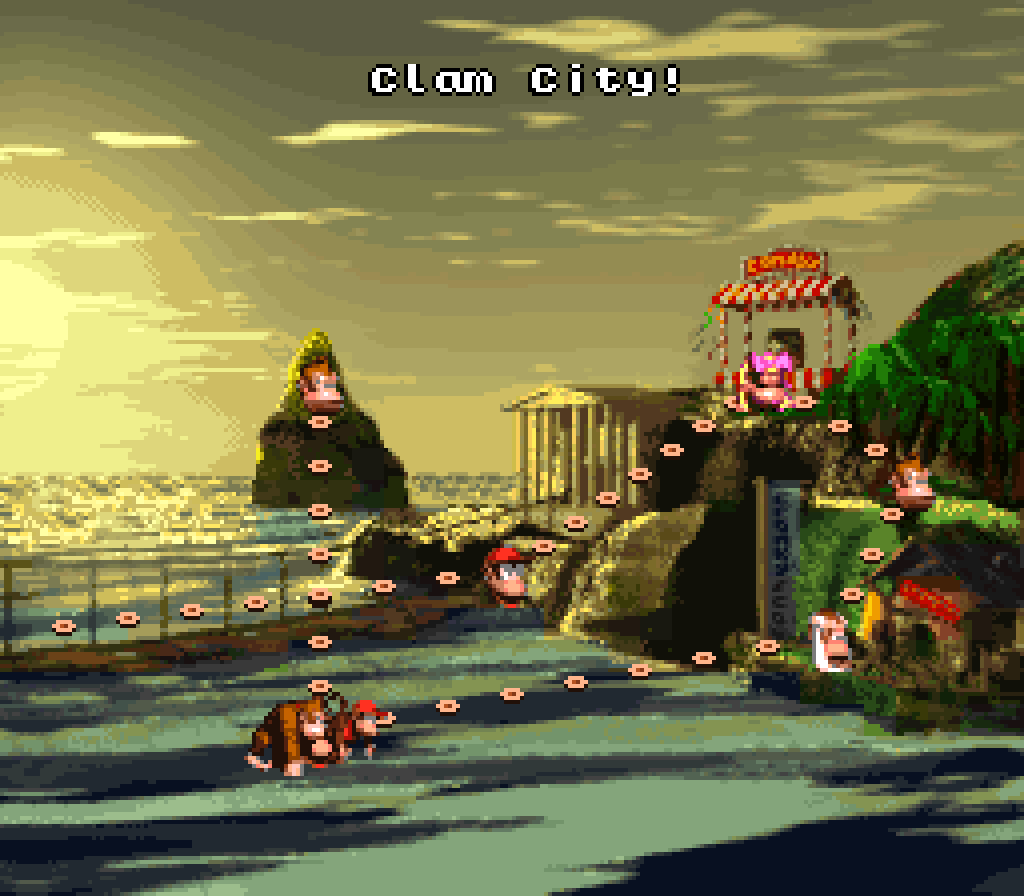
The most basic o’ water levels, wherein you just swim thru a straightforward path & dodge enemies — enemies who are not remarkable: the Bitesizes, Chomps, & Chomps Jrs. are generic fish & sharks who just swim forward or back & forth, the Clambos just shoot projectiles, & the Croctopuses just spin in circles & act as faster clones o’ Urchines from Super Mario World. The basic Bitesizes & Chomps are actually the harder enemies to dodge, as they move rather quickly & can come @ you from offscreen & they’re particularly packed together in this level, & the Croctopuses @ the end have unpredictable patterns when you 1st see them: I oft hit the middle 1 expecting it to go right only for it to go left & smack into me. Ironically, they’re not a threat in the level that focuses on them mo’. Meanwhile the Clambos can basically be ignored as you can zoom past their shots before they have a chance to reach you. The 1 exception is on the shoddy GBC version, where their pearls spawn halfway off the level & seem to come @ you from nowhere. 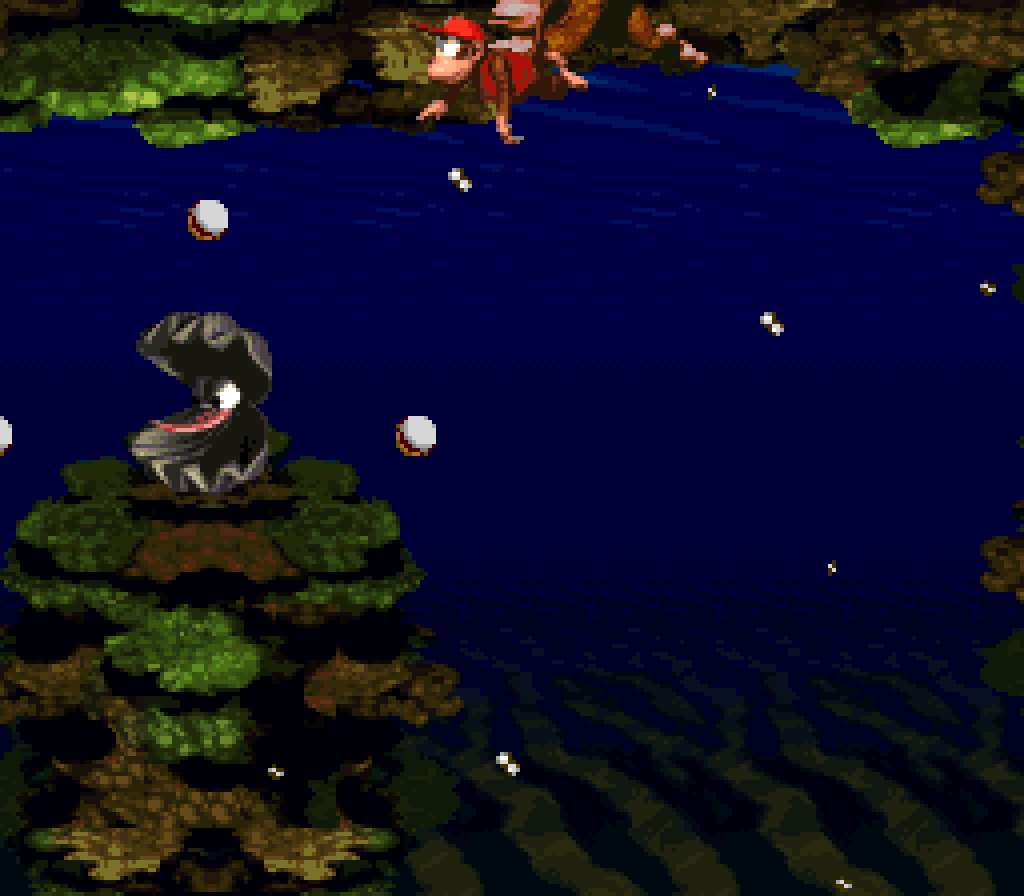
There is 1 area just before the midway point crowded with Chomps Jrs., which is interesting in that it genuinely takes some paying attention to find a safe route ( squeezing ’long the ground ) thru them in the very li’l space they offer. 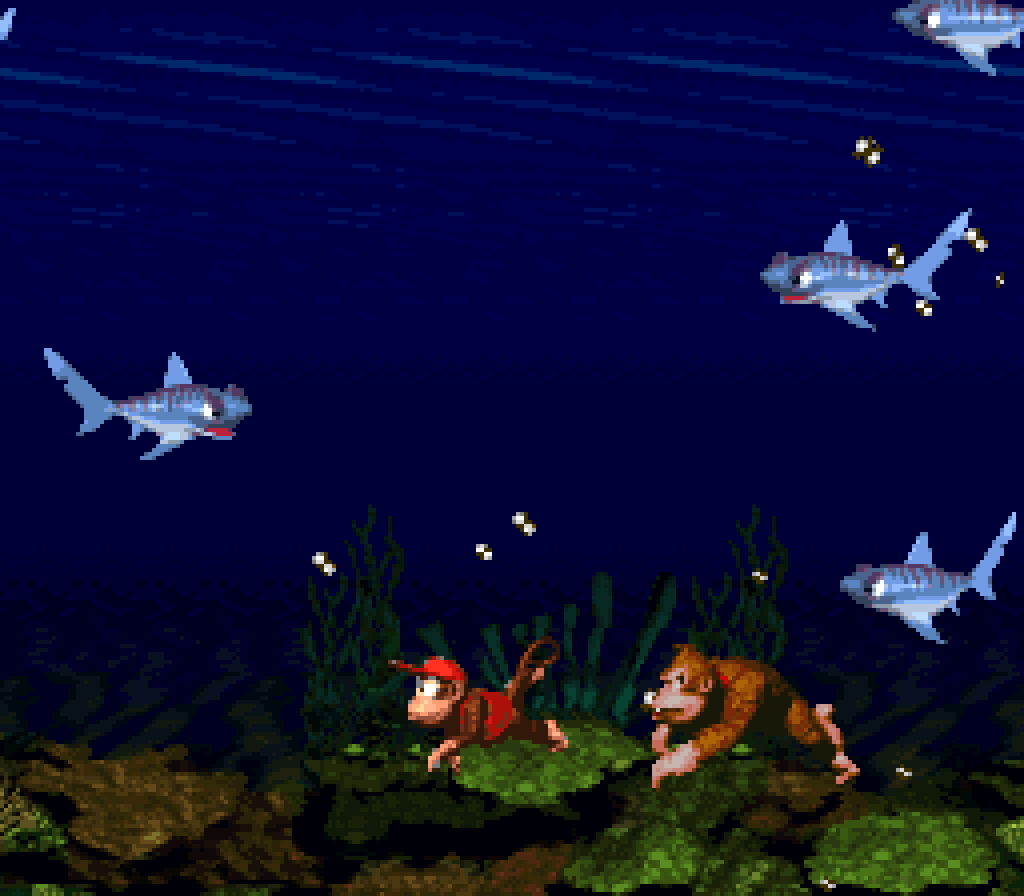
I’m kind o’ mixed on how easy this level is compared to its placement in the 3rd world, coming so soon after difficulty spikes like “Tree Top Town” & marathons like “Orang-utan Gang” while not being much mo’ difficult than the 1st world’s water level — & being easier than most world-1 levels. I guess it could act as a breather level, but breather levels are s’posed to be fun, while water levels are not fun, — not in this game a’least — specially with these water levels’ wonky camera, hit detection, & o’erall physics. In truth, while the level design is simple, this level still turns out a bit harder than it appears due to wonky controls & physics, which is ne’er a good outcome — you usually want the opposite. The camera is so slow & your character takes up so much o’ it that it’s easy for enemies to pop in & sneak attack you before you have a chance to see them. This is worsened by the slowness o’ your character, making e’en reacting when you do see them a pain. 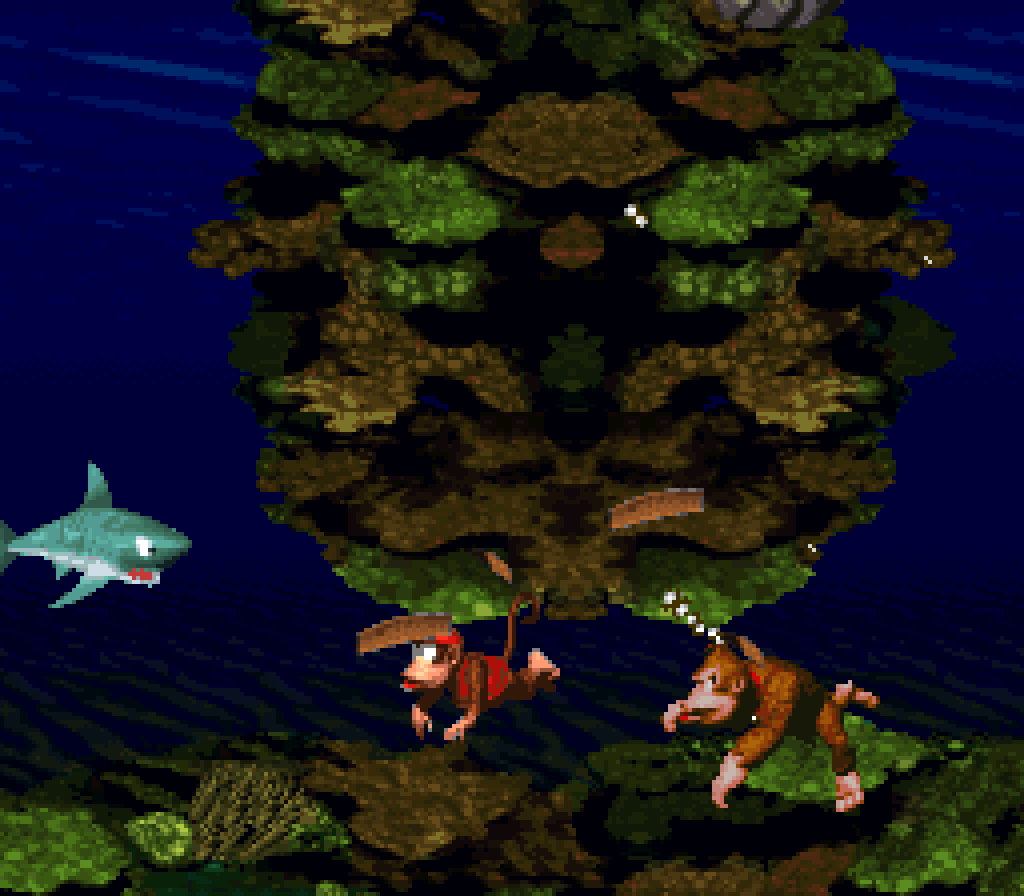
I think the biggest problem with water levels in Donkey Kong Country is that they don’t play up its strengths, but only emphasize its weaknesses. Compared to, say, Super Mario World, Donkey Kong Country’s levels are superior in terms o’ fast-paced challenges ( Super Mario World levels tending to be plodding & easy ), but inferior in terms o’ puzzle design. I bring up Super Mario World ’cause this level makes me think o’ “Forest of Illusions 2”, but that level was mo’ intricate & had puzzles to make its slow pace bearable — & that level felt harder than this, despite the levels round it being easier than the 2nd level o’ this game. 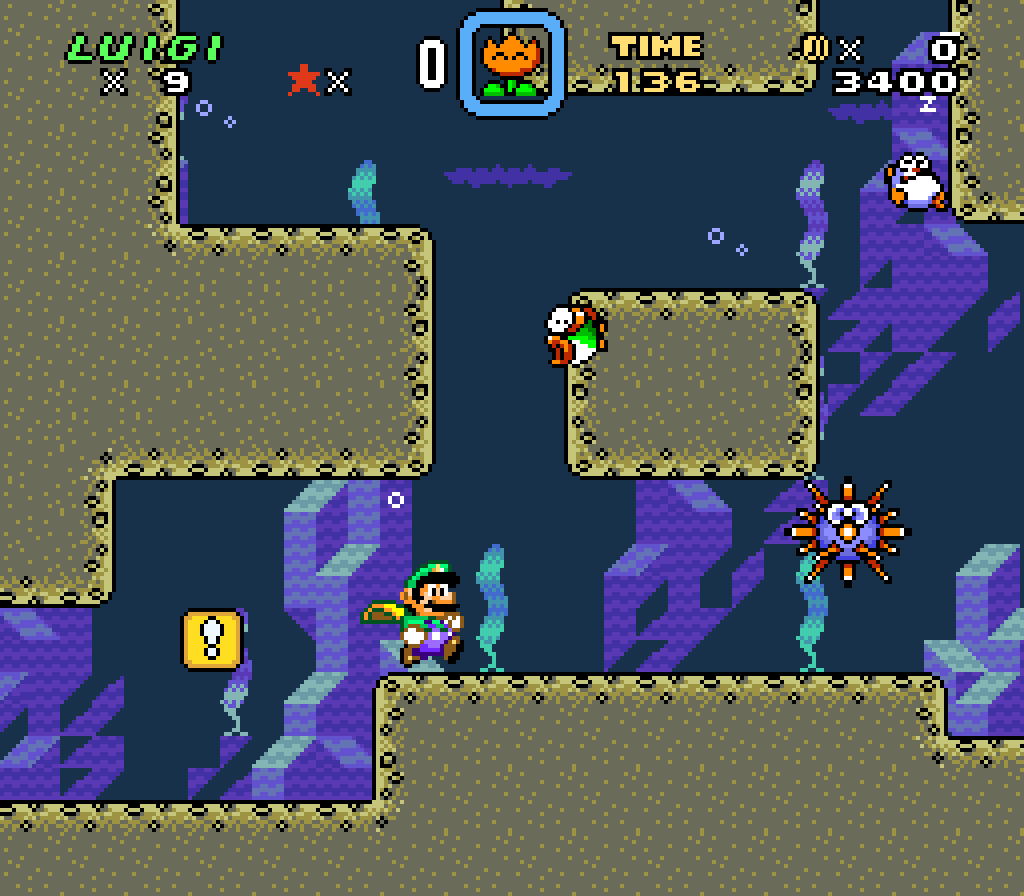
It’s too bad, ’cause the 1 positive to the water levels in this game is that, other than “Slipslide Ride”, they’re the only levels in this game that aren’t just left to right, usually twisting right, then left, then right as you go upward. It’s still a straight path without any real branching, but it’s better than nothing but left to right. & yet e’en then e’ery water level has you go from the bottom left corner to the top right. Seems like an easy opportunity for cheap variety passed up for no reason. & despite the opportunities mo’ intricate layouts offer for hiding secrets & the way the slower pace might encourage exploration, none o’ the water levels in this game have any bonuses, which is bewildering beyond belief. “Croctopus Chase” clearly shows that they were capable o’ programming barrel cannons underwater, so I can’t imagine bonus barrels would’ve been any harder to program in. I guess I should consider this a plus, since it means I ne’er have to play thru a water level mo’ than once in a playthru, but it doesn’t make them feel any mo’ interesting.
I should add that despite being 2 worlds after “Coral Capers”, “Clam City” has a much simpler layout, tho it does have mo’ enemies that are a bit harder to dodge. There’s certainly less o’ a focus on finding collectibles than just getting thru obstacles. They were so short on interesting places to put the KONG letters that the G is in plain sight & the N is in some random corner. 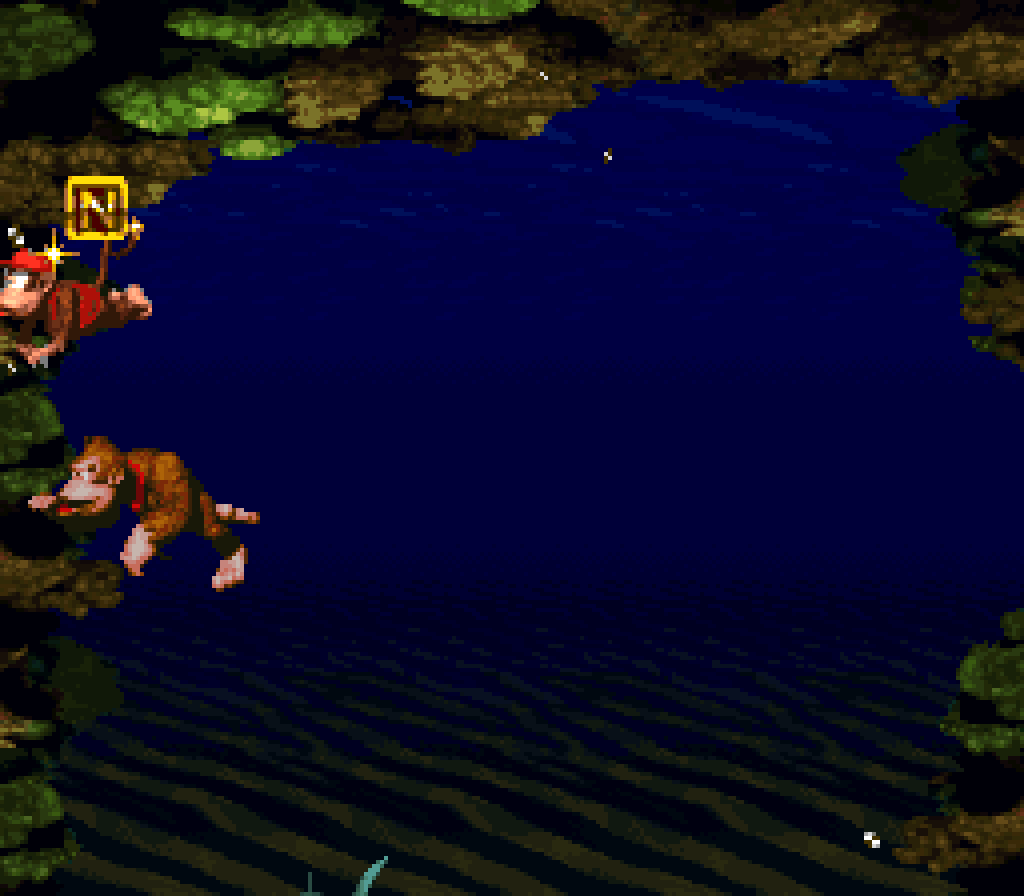
& yet, the K — ’long with a secret Enguarde — is hidden ’hind magical move-thru wall, which is always a terrible way to hide things. They could’ve made the top o’ that wall have a thin hole like they do in “Coral Capers” & it would’ve eluded many ’nough players while actually rewarding observant players rather than forcing them to rub up gainst e’ery wall — specially since the camera is specifically set so that it doesn’t move left o’ the wall to reveal any space on the other side till you’re right in the wall, e’en if you pass the normal left threshold o’ the camera, making it feel like that’s the edge o’ the screen. 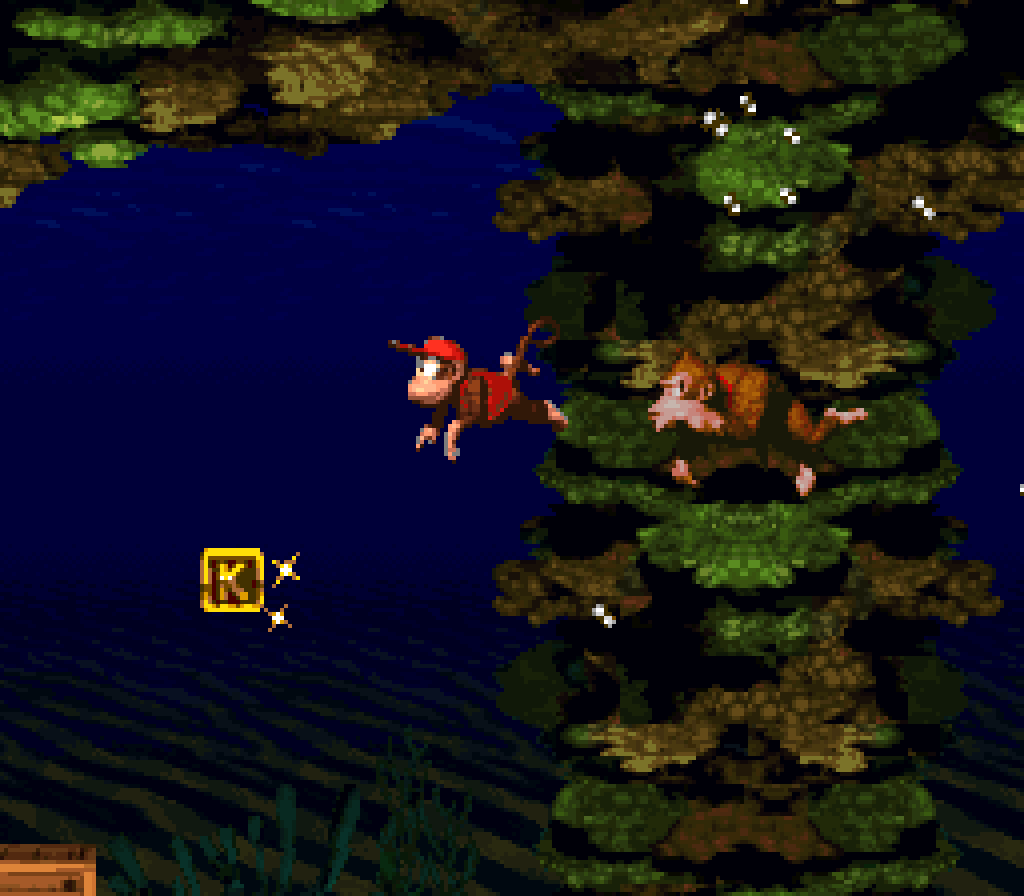
30. Coral Capers
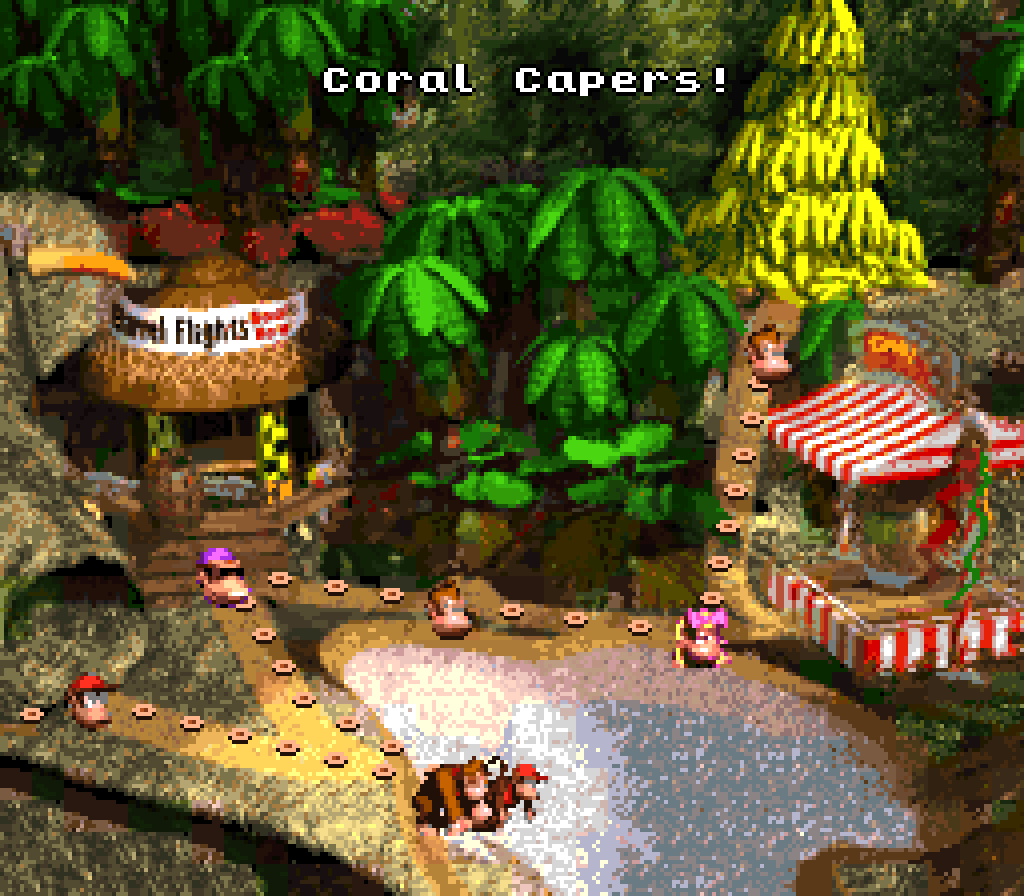
It’s amazing how similar “Clam City” & “Coral Capers” are. E’en their respective gimmicks aren’t all that unique: you could say “Coral Capers” focuses more on the circling Croctopuses & that “Clam City” focuses on the pearl-spitting Clambos, but both levels have either, just with the other enemy not in focus saved once or a few times @ the end. In terms o’ difficulty, they’re not much different, which is striking, as they’re 2 worlds apart. 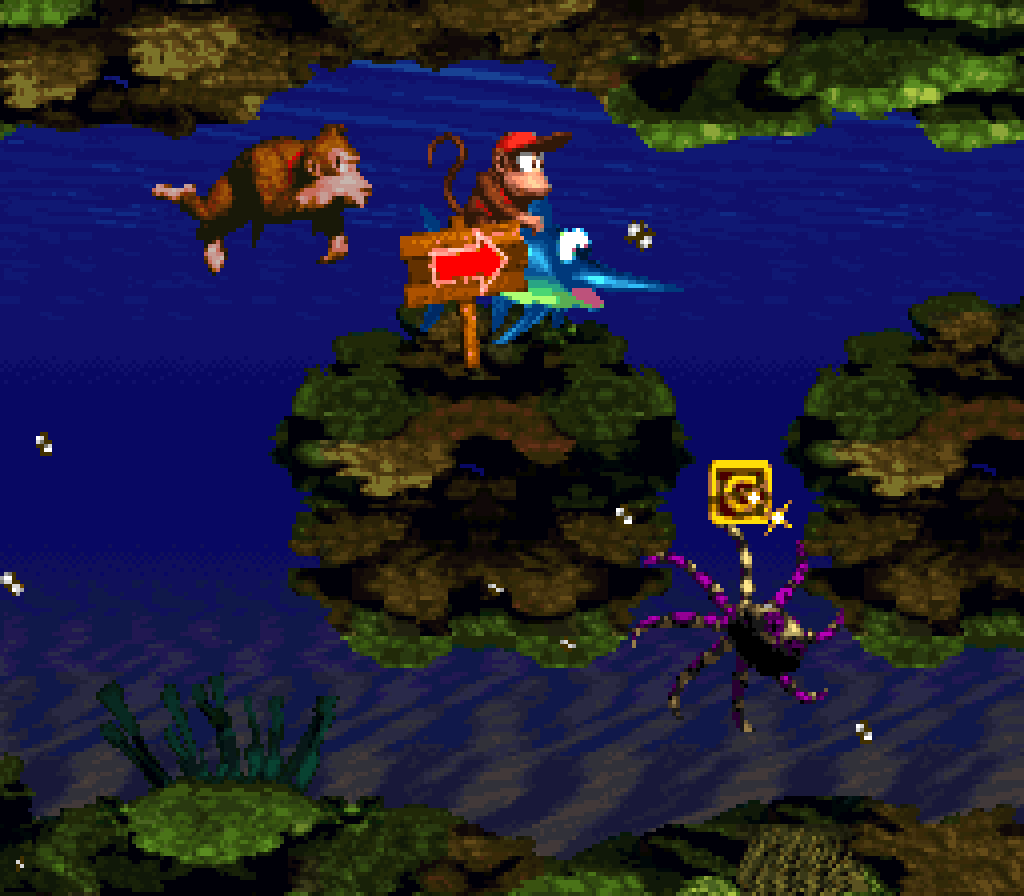
This level does have 2 Enguards that are easy to find, while “Clam City”’s is hidden. Howe’er, I would argue that the Clambos are easier to dodge than the Croctopuses, as they are slower & you can rush past the Clambos, while you have the wait ’hind the Croctopuses — which actually should be a point in “Clam City”’s favor. 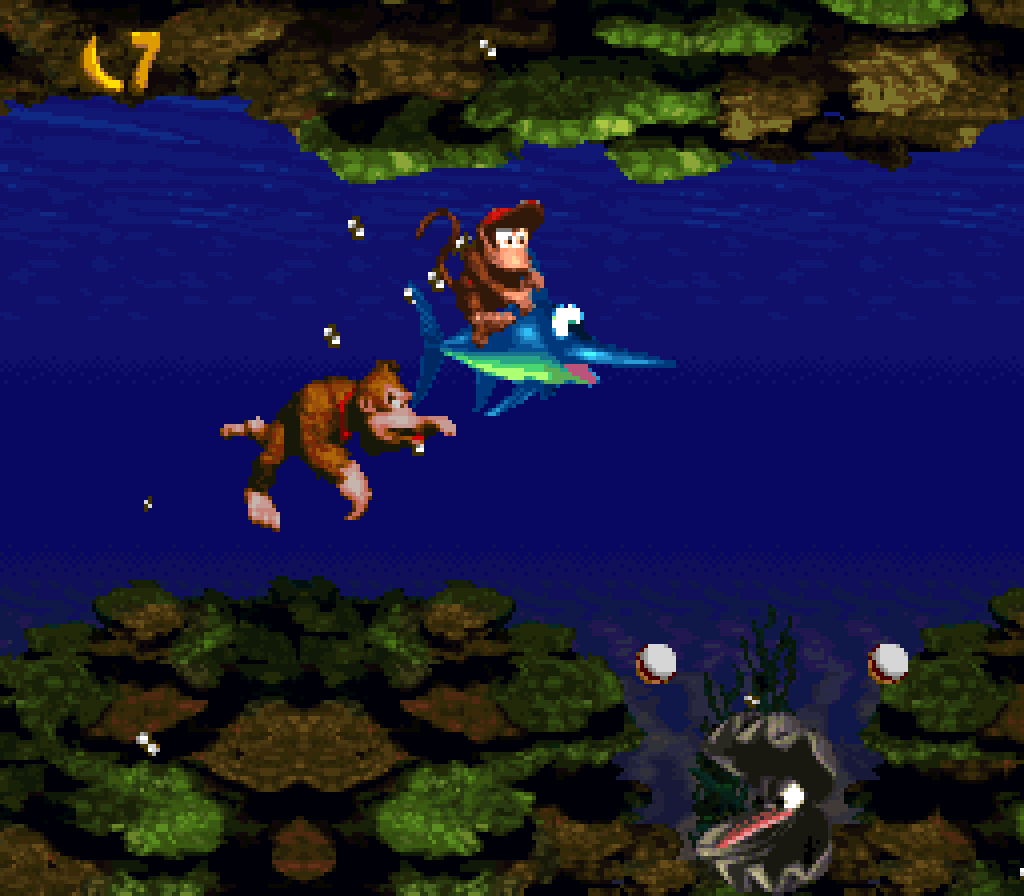
Then ’gain, this level has a mo’ complex design, with mo’ goodies to find & better KONG letter placement — tho the K & N are both rather lazily placed in an incredibly short dead end in 2 “branches”, I guess you could call them. Granted, it’s not as if you’ll particularly want most o’ the “goodies”, specially in the SNES version, which doesn’t count KONG letters for 100%, as this level, like all water levels, doesn’t have any bonuses for some inexplicable reason. 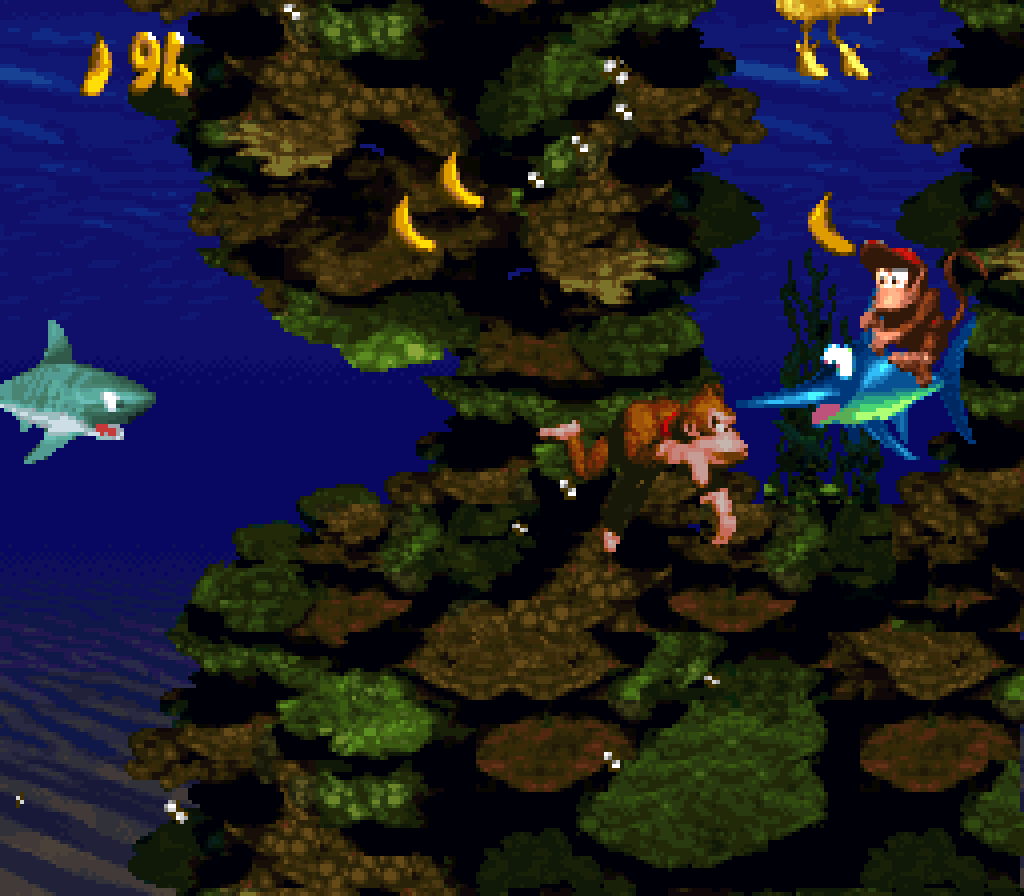
Yeah, 1 o’ these levels is redundant. Like with “Trick Track Trek” & “Tanked Up Trouble”, I feel like it’d have been better to combine their best elements into 1 level.
29. Winky’s Walkway
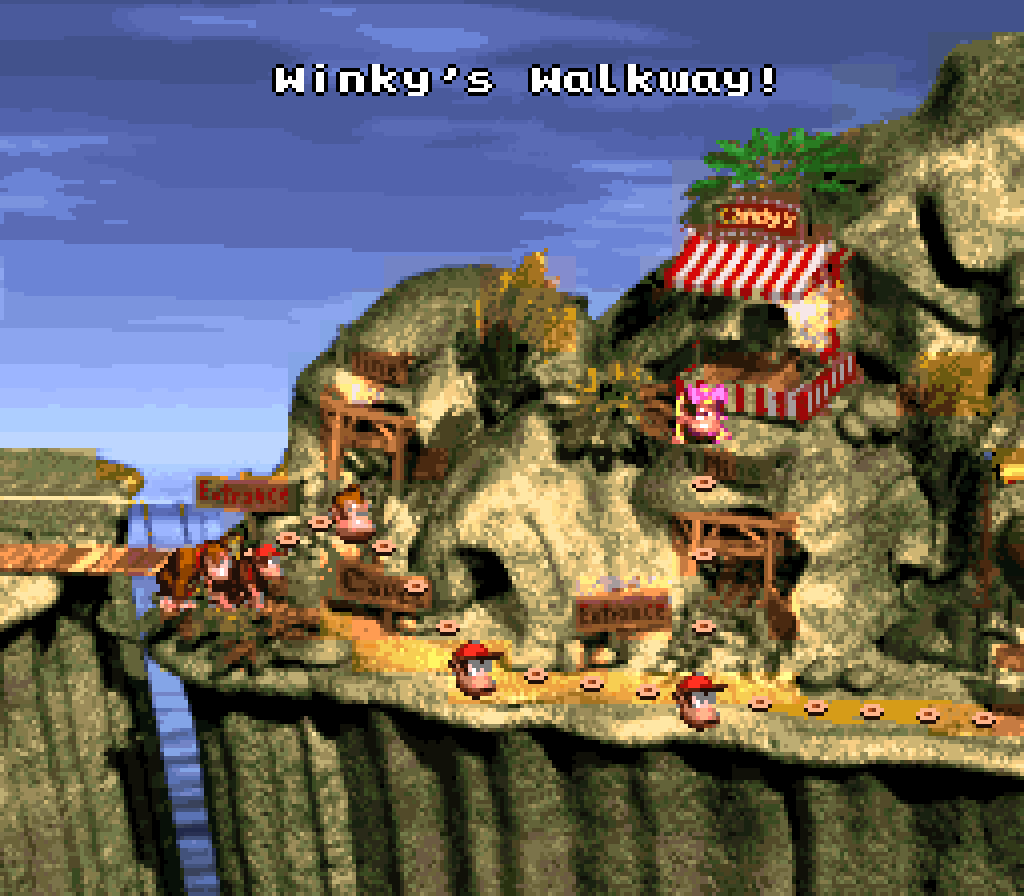
The shortest level in the game, & probably the easiest to forget from the 1st half o’ the game. As “Coral Capers” made itself simple to give you a chance to adjust to swimming, “Winky’s Walkway” simplicity can be ’splained as a way to help players adjust to Winky’s bouncier controls. The level is certainly full o’ goodies placed high-up to encourage you to use Winky to get them, including the O & G & this level’s only bonus ( which holds the N ) — tho if the player loses Winky before then, the developers were nice ’nough to put a Necky there to act as a backup stepping stone. 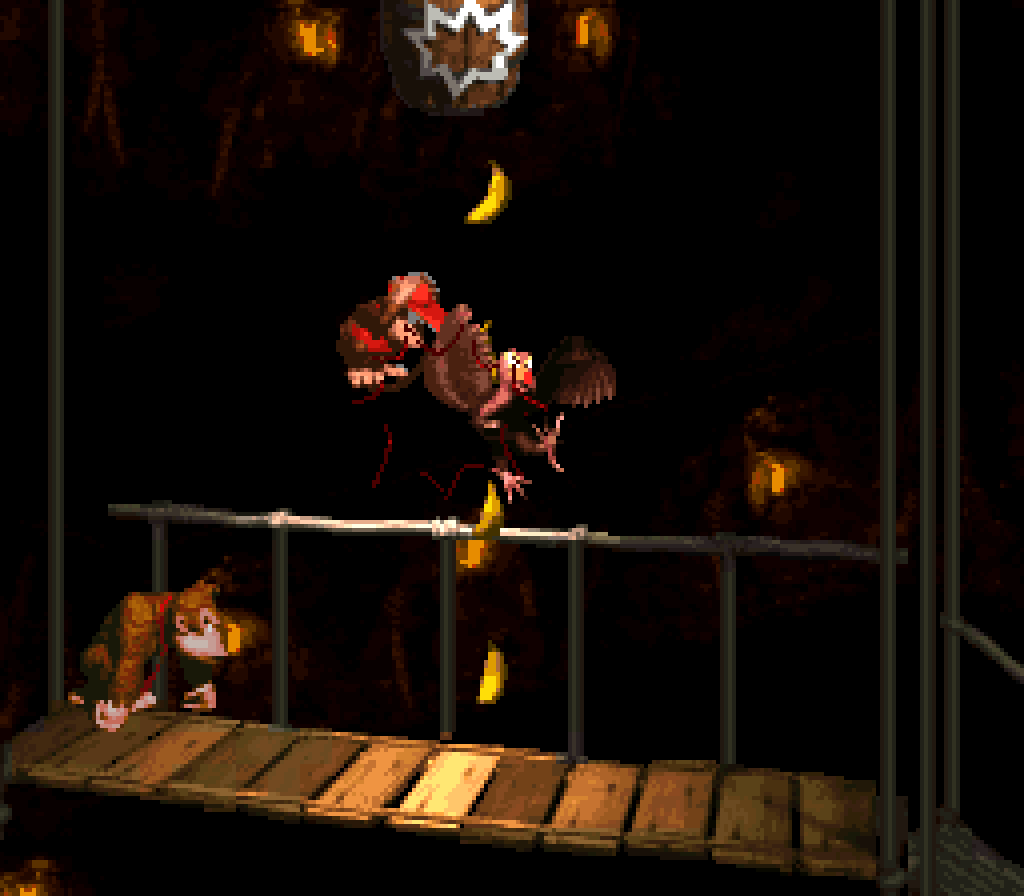
I also like how the K, which is before Winky’s introduction, keeps up the bouncing focus by being ’bove a Necky, forcing the player to take a risk ( for extreme novices, a’least ) & jump on it to get it. 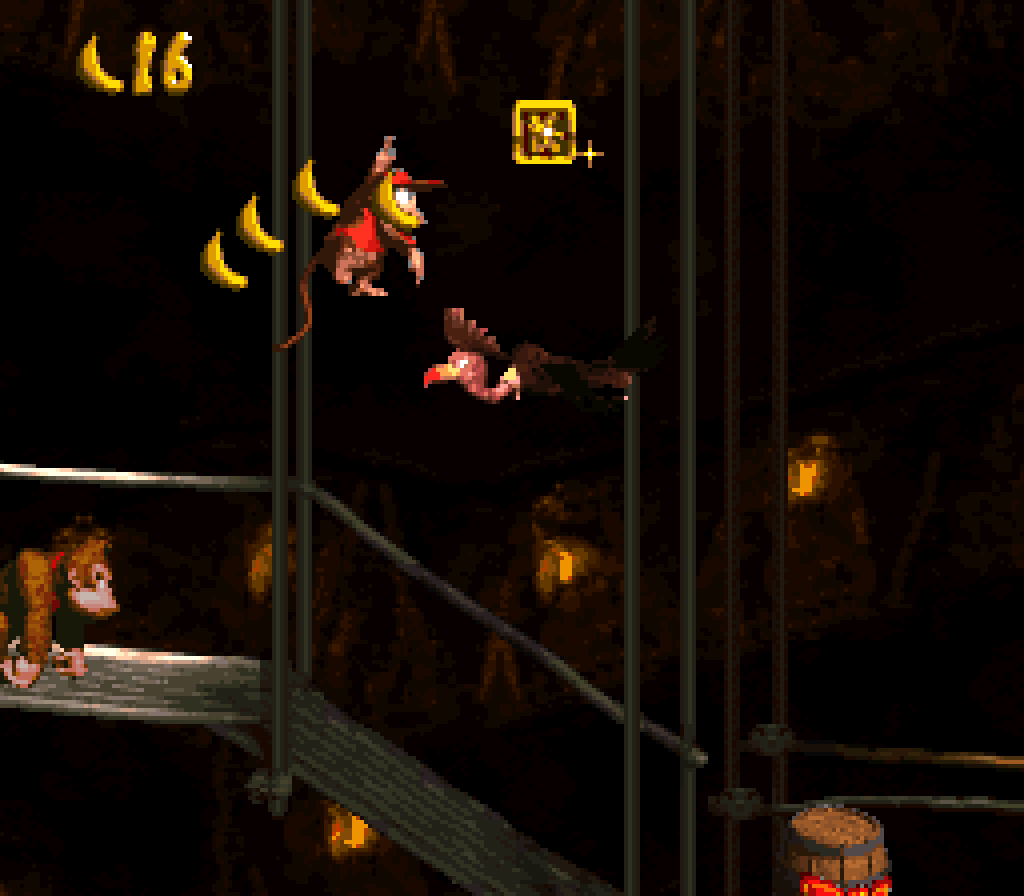
This level does introduce oil drums that infinitely spawn enemies, tho it doesn’t do much beyond just having them there in this level. You could say the ne’er-ending onslaught o’ enemies provides a bit o’ extra difficulty otherwise lacking in this level, which comes after the notorious difficulty spike, “Barrel Cannon Canyon”. 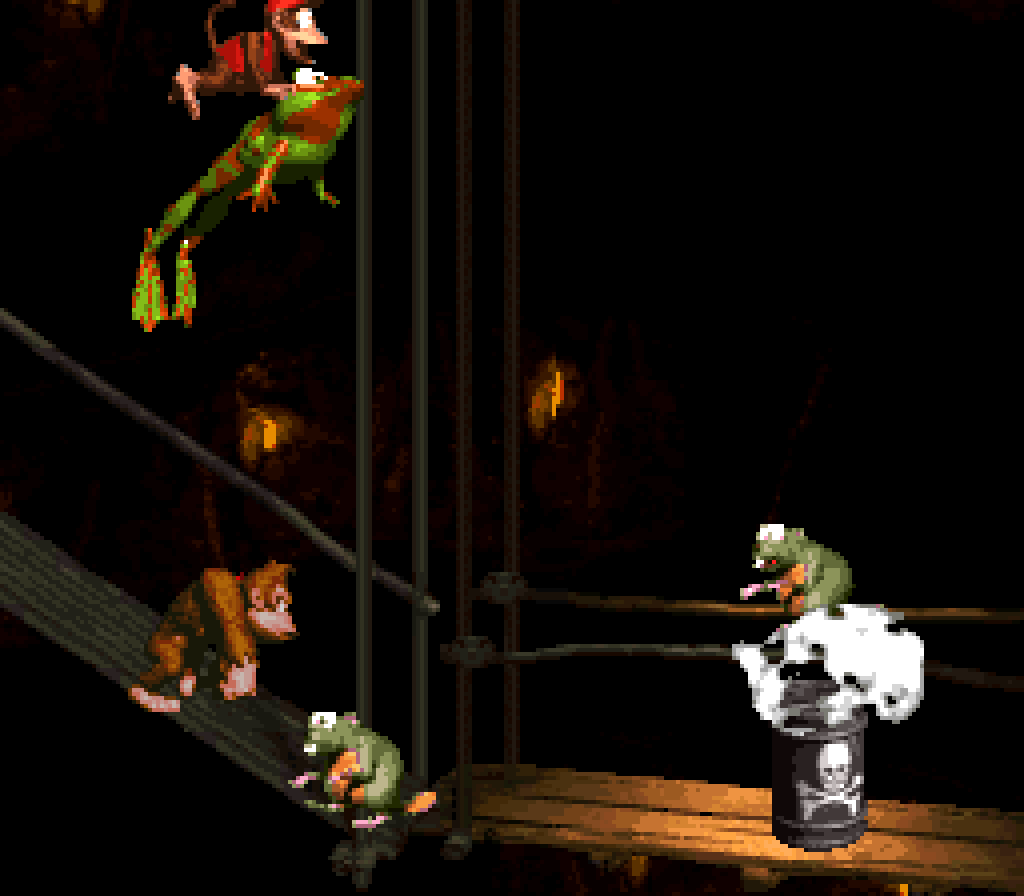
’Course, artistically, this level makes no sense. Why a frog would own a walkway is a question nobody @ Rare has e’er answered, nor have they answered why these walkways are so oft populated by vultures. Still, e’en for a game that has bees & orangutans chilling out on a snowy mountain, this level’s bizarre. Those levels still had elements that fit with their themes, e’en if those elements were alimented with the common Zinger. While other walkway levels focus on elements that relate to walkways, like moving platforms, the closes this has are those oil drums. I’m not one to say that this game needed mo’ cave levels, but if any level would’ve fit well with the cave theme, this would’ve, whereas there are cave levels ( like “Elevator Antics” ) that would’ve fit this theme better. I mean, this is s’posed to be the cave world, anyway.
Whate’er complaints I could have ’bout this level’s lack o’ interesting elements, a’least it gets itself o’er with before it could get boring, which is mo’ than can be said ’bout half o’ the walkway levels.
28. Ropey Rampage
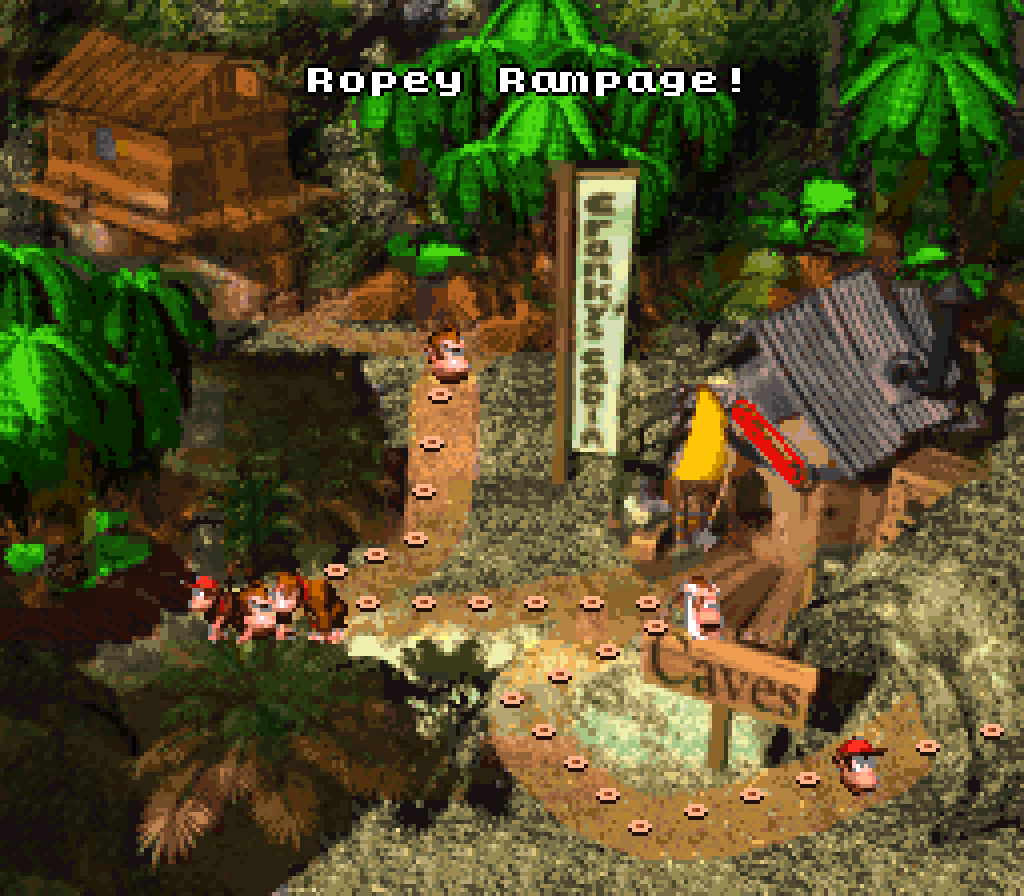
This level introduces swinging ropes, which are a good mechanic for such an early level, as they are basically just things that automatically move you round. Thankfully they offer a short, quick trip, so they don’t end up feeling like autoscrollers. Howe’er, this level doesn’t do much with the ropes: for the 1st half o’ the level, they offer no challenge, while the final half challenges you to time your jump off the end round moving Zingers. It’s cool that you can jump the 1st time swinging, e’en with the Zingers, making this part feel fast-paced. 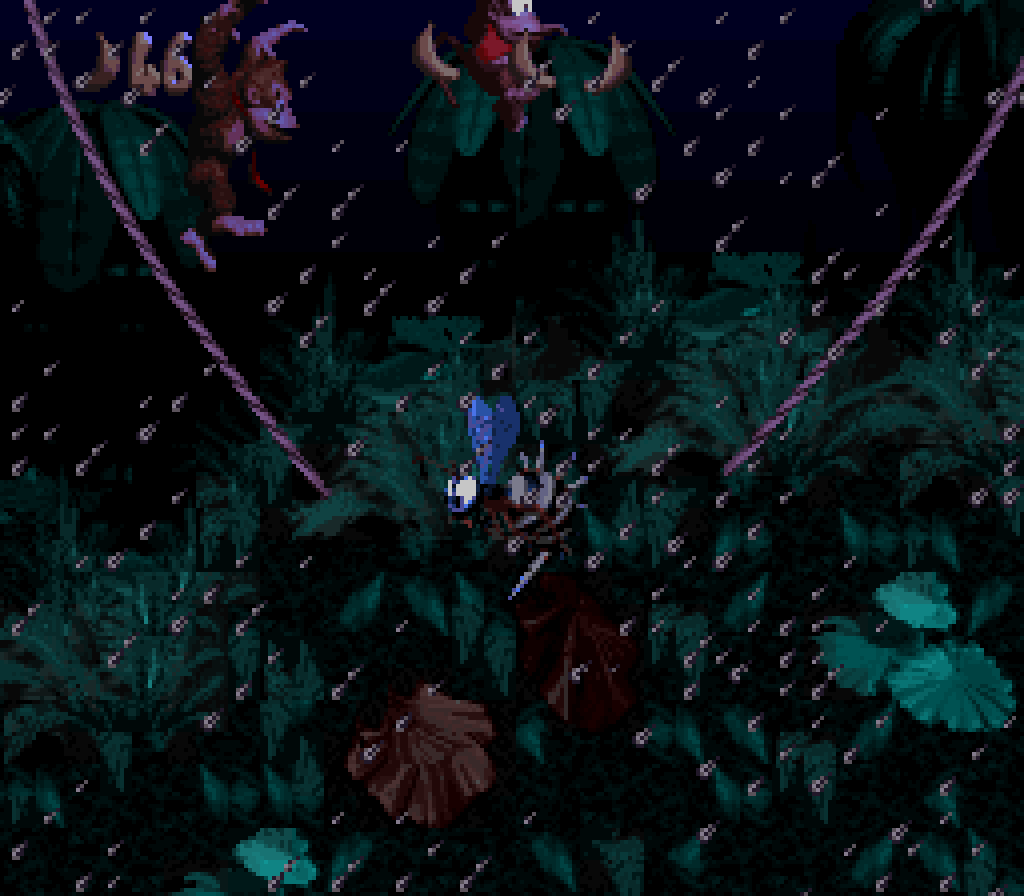
This level also introduces Armies, which are quite challenging for the 2nd level o’ the game. I’m embarrassed to admit that I was killed far too many times by 1 o’ the 2 Armies @ the beginning o’ the stage when I was a kid. Granted, they’re easier with DK, & the 1st area gives you a TNT barrel if you’re stuck with Diddy. This level also introduces a common trick Rare does in this game o’ putting an enemy o’ note right near the end as a way to try & trip you up. In this case it is 1 last Army, who can be tricky to kill on its downward-sloping steps if you’re Diddy. Howe’er, this is just appearances, as you can just jump o’er it & hurry into the cave hole, where the Army can’t hurt you. 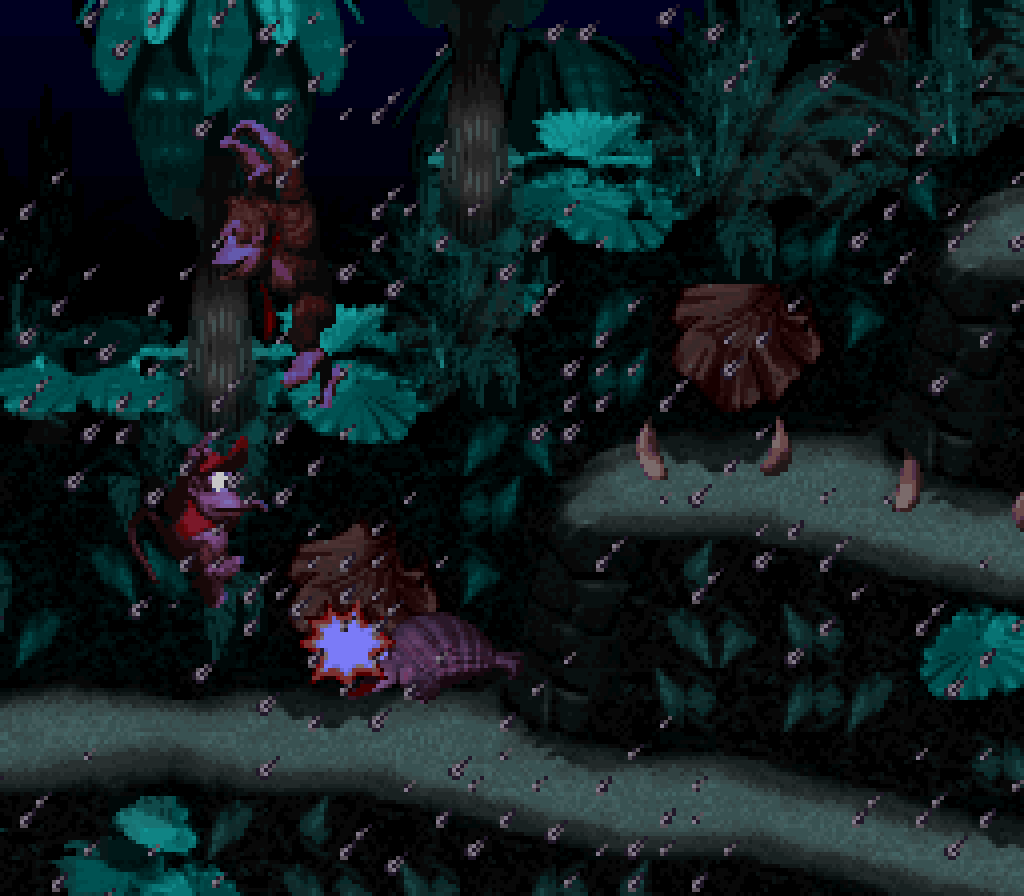
This level has the 1 o’ the few o’ this game’s notorious “fall into pit & hope there’s a bonus” bonuses & probably played a big part in feeding that notoriety, being such an early-game level that probably discouraged players from trying to find all the bonuses in the rest o’ the levels: it’s a barrel under a small hole ’tween 2 tree platforms with no indication or hint — no bananas going down there — to show it off. 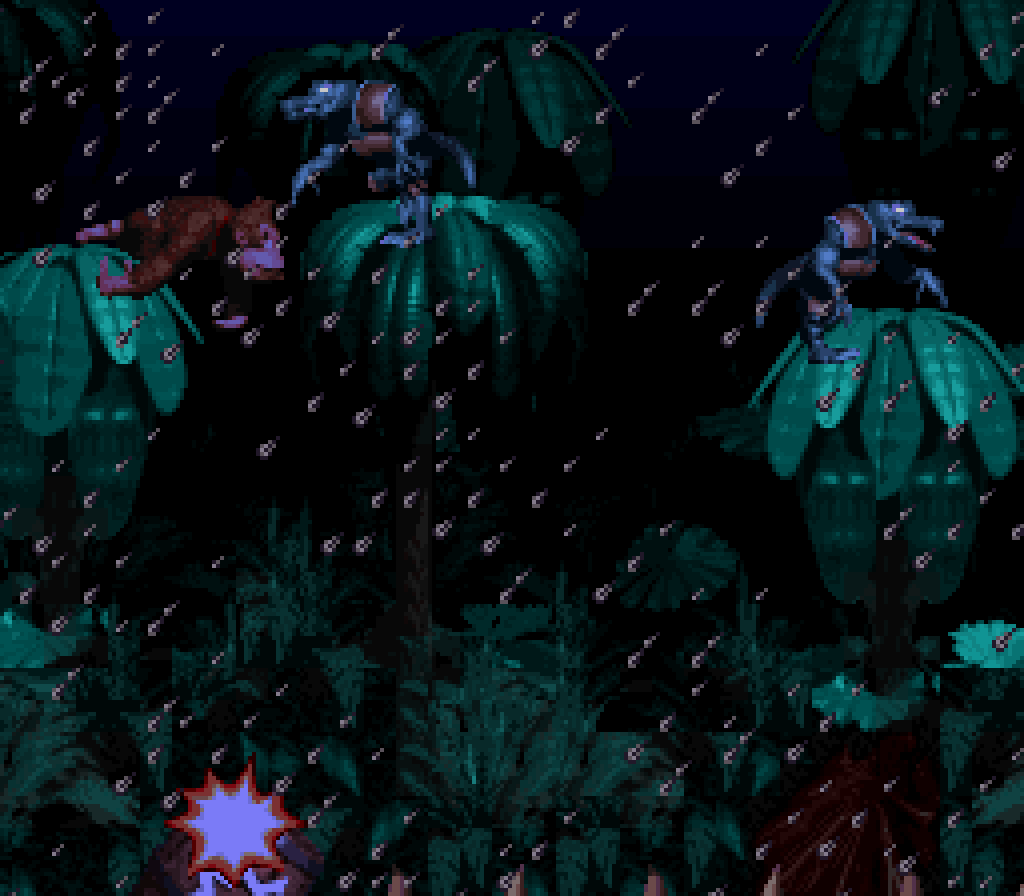
E’en the hard-to-find bonus barrel after this shows the top lip o’ the barrel @ the bottom o’ the screen, making it a’least fair, e’en if challenging for such an early level. 
Other than that bit o’ bullshit, this level is unremarkable. Being “that other jungle level” after “Jungle Hijinx” doesn’t help, nor does the fact that the other jungle level is the very memorable “Orang-utan Gang”. While the KONG letters are all in plain sight, ’cept for the G, which is up on a palm tree round the end — a pretty good place for a letter — 1 interesting quirk is that there are 2 Ns, 1 in a bonus & 1 in the area skipped by the bonus, something the game rarely does. 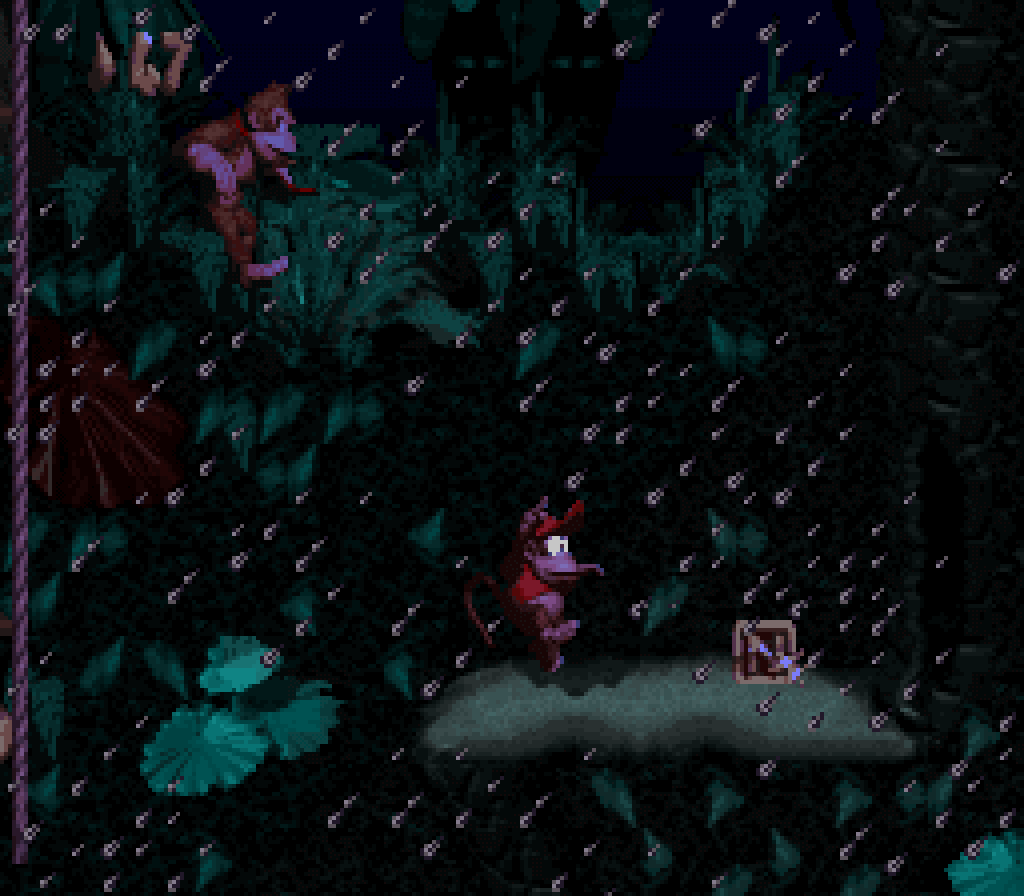
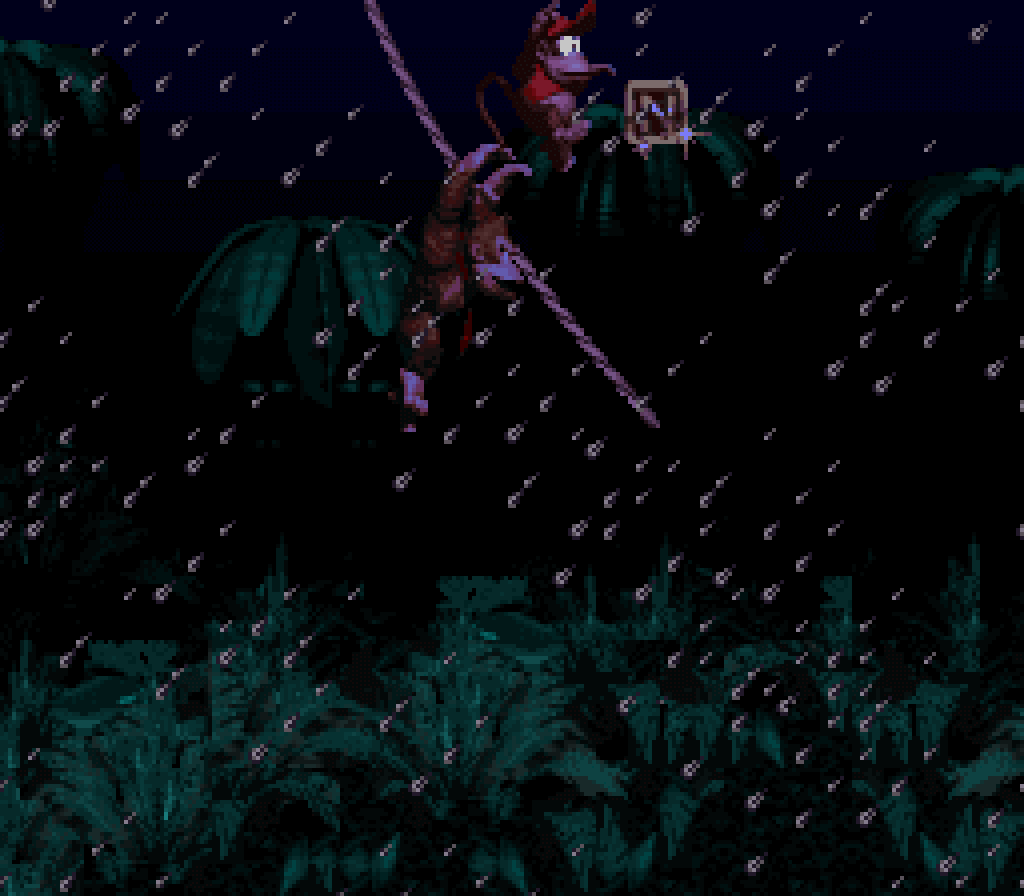
I do like the rainy, dark cast o’er the level, a continuation o’ how “Jungle Hijinx” goes dark @ the end, whereas this level goes in reverse, back to clear, morn @ the end.


